Insights
The Art of Vendor Vetting
Plastic Piracy
Are You Making Enough?
PLUS: Building an Interviewing Toolkit



The Art of Vendor Vetting
Plastic Piracy
Are You Making Enough?
PLUS: Building an Interviewing Toolkit



LVT is making communities safer, protecting shoppers and associates, and keeping stores open.
Save time and money while improving safety for your organization with early detection. With network technologies and edge analytics, you can gain real-time insights into your property, even before a burglar alarm is triggered.
> Ideal for 24/7 surveillance in unattended areas
> Deter theft, mitigate damage, and reduce fines
> Improved scene intelligence reduces false alarms
> Custom trigger conditions, such as a vehicle or human (or both) entering an area or crossing a virtual line
> Easily set up to respond by activating a loudspeaker or turning on a light
> Intelligent data for your security operations center
Contact your Axis representative to get started or scan the QR code to learn more.


By Courtney Wolfe

By Jacque Brittain, LPC
By Tom Meehan, CFI

By Allie Falk

Sam Boykin

Christina Burton, PhD
Amodern-day philosopher once said about change: “That’s just the way it is. Things’ll never be the same.” Though the rest of the song is a little bleak, I think things never being the same is a good thing. Who wants the status quo? No thanks. Choose your attitude.
Layoffs, new jobs, and leadership change. AI, tech, and customer behavior. Business models, laws, and policies. The economy. We can choose to freak out about every change, or we can simmer down and look at it as a time to reset, rethink, and progress. In addition to the world around us, we are continually changing. We can freeze up and panic or we can choose to craft, mold, and point that change in the direction we want to go. A few clichés are part of my credo: We are not victims; we hold the keys to our destiny. Hope is not a plan. Failure to plan is planning to fail. How in the world do I plan for change, you may ask? It starts with educating yourself—so dig into our Winter 2025 issue.
After checking out our fabulous new cover look, in this issue of LP Magazine, you’ll find several articles to help you understand and deal with change. Hear from LP leaders about what they are seeing going on in the retail industry and how it’s affecting LP in our cover story “The State of Loss Prevention.” Courtney Wolfe, our managing editor, did a deep dive with a group of LP department executives to understand what’s changing, keeping them up at night, or perhaps giving them optimism.

Stefanie Hoover, CFI Editor-in-Chief
In this issue, we feature articles on developing skillsets for various waypoints in your career. Maybe you’re concerned about layoffs or think you’re not paid enough; we have advice for you. Do you deal with solution providers and want to upskill your negotiation tactics? Check out Tom Meehan’s article. Wondering what’s coming next in fraud schemes? One word—pirates. Our friends at the LPRC write about changes to crime models. And, if you want to hear first-hand about growth and change, take a look at Dr. Leslie Allen’s article on achieving her PhD in criminal justice.

It’s amazing how this magazine comes together. I want to thank all our contributors—we couldn’t do this without your continued support and expertise. Whether you wrote an article or provided quotes and background, you are appreciated. If you are interested in being published in LPM, reach out to us at Editor@ LossPreventionMedia.com. Keep an eye out for more changes to our print and digital formats throughout the year.
Powered by The
President Caroline Kochman
Caroline.Kochman@losspreventionfoundation.org
Vice President, Editor-in-Chief
Stefanie Hoover, CFI StefanieH@LossPreventionMedia.com
Editorial Director Jacque Brittain, LPC JacB@LossPreventionMedia.com
Managing Editor Courtney Wolfe CourtneyW@LossPreventionMedia.com
Assistant Editor Allie Falk AllieF@LossPreventionMedia.com
Retail Technology Editor Tom Meehan, CFI TomM@LossPreventionMedia.com
Contributing Writers
Sam Boykin
Christina Burton, PhD David Thompson, CFI
Design & Production SPARK Publications info@SPARKpublications.com
Creative Director Larry Preslar
Advertising Strategist Ben Skidmore 972-587-9064 office 214-597-8168 mobile Ben@PartnersPR.com
Subscription Services New or Change of Address LPMsubscription.com or circulation@LossPreventionMedia.com
Postmaster Send change of address forms to Loss Prevention Magazine 33 Walt

Andrews, CFI Vice President, Loss Prevention, VF Corporation
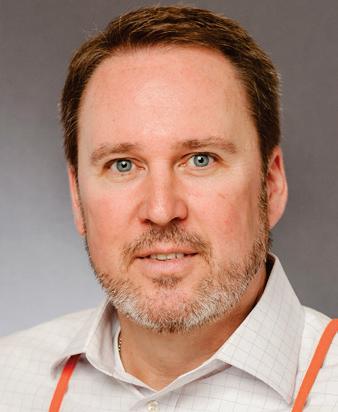
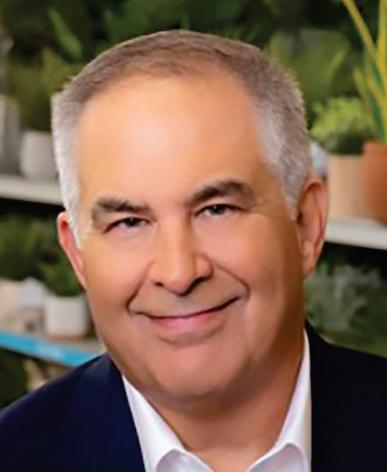
Rick Beardsley Senior Director of Loss Prevention and Safety, At Home Group


Michael Limauro, LPC Vice President, Global Asset Protection, Whole Foods Market

David Lund, MBA, LPC, CFI Executive Director, International Association of Interviewers



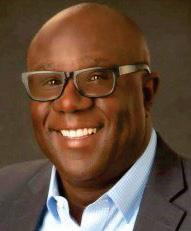
Cloud Group Senior Vice President, Loss Prevention, Ross Stores
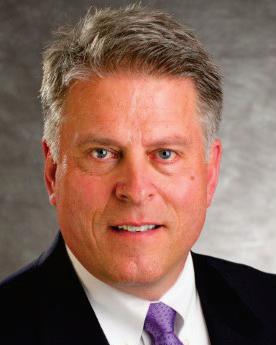


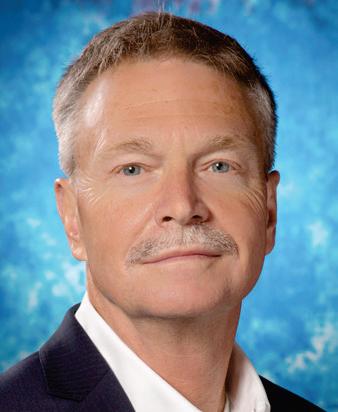

Dan Moren Senior Manager, Starbucks

Peck, LPC Senior Vice President, Loss Prevention, The TJX Companies


Global Protection
LPM's Editorial Board is composed of some of the loss prevention and asset protection industry's top executives from a wide range of retail sectors. These senior executives provide guidance to the LPM team on article topics and industry issues that are of current concern and interest to LP professionals. To learn more about the Editorial Board, contact Stefanie Hoover, CFI, at StefanieH@LossPreventionMedia.com.
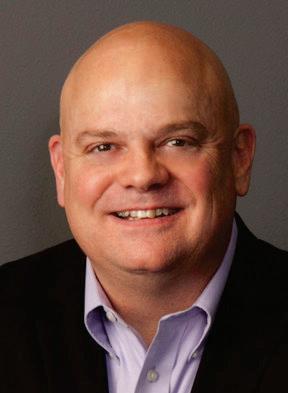






Rhett Asher SVP, Community Relations and Partnerships


Bobby Haskins SVP, Customer
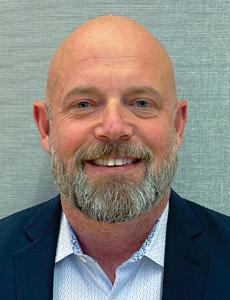
James Stark Segment Manager, Retail

Stephen B. Longo VP, Strategic Initiatives
Stuart Rosenthal VP, Global Sales

Tom Meehan, CFI CEO
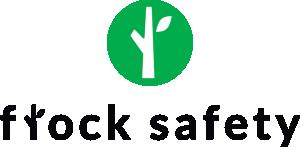
Chris Reene Head of Commercial
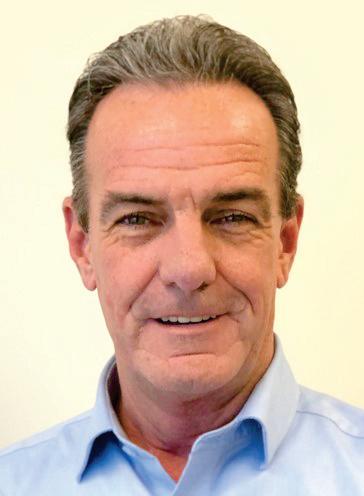

Craig Greenberg Chief Commercial Officer
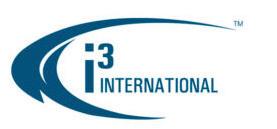
Vy Hoang Chief Customer Officer


Dave Sandoval President

Alix Arguelles Director of Product


Jack Ashton VP, Strategic Development




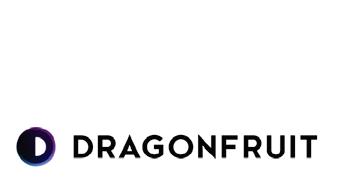
Amit Kumar Founder/CEO


Gillette VP, Retail Sales

Scott Thomas National Director for Signature Brands


Jordan I. Rivchun Head of Business Development

Cita Doyle, LPQ, LPC VP, Sales and Marketing


Matt Kelley, MBA Head of Retail, Go To Market

Kevin O'Brien EVP of Business Development


Ned McCauley Director, Sales
Robb Northrup Director, Marketing Communications


Tony Sheppard, MSM, CFI, LPC VP, Retail Risk Solutions


Scott Pethuyne Sr. Analytics Solution Consultant
LPM's Solution Partner Board is composed of the magazine's strongest solution provider supporters. These executives provide their counsel on how the magazine can better advance and serve the loss prevention and asset protection industry. To learn more contact Ben Skidmore at Ben@PartnersPR.com.
Join these great companies as an LPM corporate sponsor. Email Editor@LossPreventionMedia.com for more information.















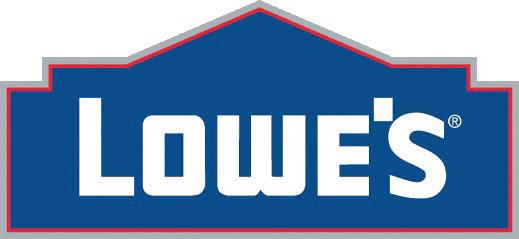












By Courtney Wolfe
I t’s hard to stress just how much LP has changed in the last decade—or just the last five years. Retail itself has evolved fundamentally, and the role of LP, consequently, has gone through a sort of rebirth.
“Asset protection is seeing a bit of a renaissance,” said one VP of LP who chose to remain anonymous. “With the focus on ORC, life safety concerns, homelessness, transients, etc., AP is being counted on to come up with innovative and cost-effective solutions to keep our associates and customers safe.”
With so many changes and different factors affecting the industry at this moment in time, LPM set out on an ambitious task about six months ago. We spoke with LP organization leaders along with the VPs of LP at a wide range of retailers—from home improvement to grocery to sporting goods to fine jewelry to specialty and everything in between—and asked them a long list of questions to gauge what exactly the state of LP is as we start 2025.
This was not a scientific survey but rather a gathering of anecdotal evidence of what it’s like working in LP right now from those in the thick of it. Many chose to remain anonymous, which allowed them to be completely candid when answering questions such as “How does the C-suite perceive LP?” “What are the most promising or overpromised technologies being promoted to LP?” “Has funding increased or decreased for LP?” and more.
Our hope is that this serves as a snapshot of LP at this moment in time and, more than anything, that it starts conversations—with colleagues, different retailers, law enforcement, and government officials. You’ll notice there’s truly no definitive answer to any question, leaving plenty of room for discussion and disagreement.
The relationship between LP and the C-suite hasn’t always been an easy one. However, with the rise of retail crime making mainstream news headlines and

becoming a topic of earnings calls, retail executives are relying heavily on LP to right the ship.
“I believe our C-suite sees more value in AP than ever before,” said one anonymous grocery retailer. “They are coming to us to identify or create solutions to some very difficult issues. Ensuring the safety of team members and customers and providing a safe place to work and shop has remained a top priority across the industry but has also required a bit of outside-the-box thinking in recent times.”
Todd Fernandez, director of LP and safety at Stater Bros. Markets, agrees: “We have a voice at the table in all aspects of operations. Experienced LP professionals can impact the bottom line in many different areas.”

This sentiment was echoed in other retail verticals beyond grocery.
“Within our organization’s C-suite, there is a clear understanding of the crucial role of loss prevention in safeguarding the company’s employees,
physical assets, and brand,” said Tiffany VP of Global Protection Services Hank Siemers, CFI.
Mark Stinde MBA, LPC, who has served as VP of AP at Casey’s since December 2022, said his “total loss” methodology has helped strengthen the relationship between LP and the C-suite.


“The way we approach the business is very holistic, connecting the different ways the company might suffer loss in our ‘total loss’ approach,” he explained. “This approach ultimately supports improved margins for the company. As a result, the executive team sees the value in our function, and we are viewed as an essential piece of the overall business.”
One anonymous retailer said that the C-suite’s perception really depends on the current state of their company.
“In many organizations, the C-suite recognizes LP as essential, especially with the rise of ORC and retail violence impacting the bottom line,” they said. “However, the level of prioritization can vary depending on the company’s current challenges and goals. Companies facing significant shrinkage or reputational risks are likely to view LP as integral to the overall strategy.”
An anonymous home improvement retailer said the C-suite is starting to count on AP for more than traditional LP.
“Overall, I would agree that the C-suite values LP’s role and its purpose in preventing loss,” added National Retail Federation (NRF) VP of AP and Retail Operations David Johnston. “To what extent depends on the individual department, organization, and, most importantly, the alignment of expectations and measuring value between the C-suite and LP. There are several examples of LP leaders building strong, strategic trelationships

“I believe our C-suite sees more value in AP than ever before. They are coming to us to identify or create solutions to some very difficult issues. Ensuring the safety of team members and customers and providing a safe place to work and shop has remained a top priority across the industry but has also required a bit of outside-the-box thinking in recent times.” –anonymous

with C-suite leaders and securing a seat at the table. There are just as many examples of situations where LP has been blindsided and impacted due to an assumed perspective of their value. The questions to always consider are ‘Does your LP function measure value the same way as your C-suite?’ and ‘How can you continue to increase the value of LP in your organization?’”
The amount of funding LP receives is often directly tied to the importance the C-suite places on its role. The majority of the retailers we spoke with said that funding for LP is increasing within their organization. However, that funding doesn’t necessarily mean more manpower.
“It’s frustrating,” said an anonymous grocery retailer. “From a human capital standpoint, I think funding is remaining the same. But I think we’re getting more technological investments passed through, and that’s a higher priority for companies than in the past. So we’re not
getting more people, but we’re getting more resources and tools from the technology standpoint.”
Siemers agreed that overall funding remains steady while investments are being made in different elements of LP: “Funding for LP appears to be maintaining its current level across most retail companies, with a notable emphasis on investments in cutting-edge technologies and comprehensive training initiatives.”
Fernandez said funding for LP is “definitely increasing” at Stater Bros.
“Investments in store design, remodels, and technology such as video and AI are leading the way,” he said. “We are in the process of reducing our entry/exit designs to one exit instead of two, which will make it much easier to control our losses. Technology will continue to be a force multiplier for our industry, but it will come at a steep investment.”
An anonymous sporting goods retailer said that funding has increased, but they don’t expect that to last.
“Over the past few years, funding for LP appears to be slightly increasing in
companies where shrinkage and retail crime are pressing concerns,” they said.
“In 2025, I expect funding to plateau as most companies have developed a strategy to deal with this new level of shrinkage and retail crime.”

Khristopher Hamlin, VP of AP at the Retail Industry Leaders Association (RILA), stressed that while funding for LP generally remains steady at most retail companies, it comes with significant pressure.
“Our members are increasingly challenged to demonstrate the return on investment for the dollars spent on LP initiatives,” he said. “Retailers recognize the importance of LP, but with economic uncertainties, tighter budgets, and competing priorities, every dollar spent is scrutinized. LP teams are often asked to justify their budgets by clearly showing the value they bring to

the organization, not just in terms of reducing shrink but also in protecting brand reputation, ensuring employee safety, and enhancing the overall customer experience.”
The NRF’s Impact of Retail Theft & Violence 2024 report, released in December, shows that 64 percent of respondents have created or added positions or roles within their LP teams in response to increases in theft, violence, or loss since 2019. In addition, 39 percent increased internal payroll budgets from 2022 to 2023.
“Our team is still growing as we continue to find ways to add value and solve difficult problems across the entire enterprise,” said an anonymous grocery retailer.
Another grocer said their team is also growing, adding non-traditional roles like data scientists and finance and technology teams, in addition to growing field and ORC teams. Talking to other retailers, this seems to be a trend.
“An increase in department ORC teams has been growing in various companies,” said an anonymous specialty retailer. “Data analyst and forensic teams have continued to grow based on the nature of the continuous flow of never-ending data to identify
trends, patterns, and focused solutions internally and externally.”
“[The number of LP personnel] is remaining close to the same, and some positions are being reassessed to adapt to changing demands,” said Stater Bros.’ Fernandez. “We are adding LP analyst positions to assist with gathering case data and providing that data to our investigators.”
Hank Siemers said he is seeing a growing demand for expertise in cybersecurity and data analytics, leading to an increase in LP positions and the creation of new roles tailored to technological integrations.
Hamlin has also seen an increase in investigation-level roles in LP departments, but a decline in leadership-level roles.
“With organizations acquiring other companies and retailers going out of business, there’s probably fewer total LP positions today than there were a couple years ago,” Stinde shared.
One anonymous retailer believes the number of LP positions has remained the same or decreased, while another said that, though the number has increased in recent years, they expect that growth to plateau in 2025.
So, with many organizations increasing the number of LP personnel on staff,
how difficult is it to find quality talent right now?
“Hiring and promoting top talent has always been a priority for me,” said one grocery retailer. “With that said, we spend a great deal of time making sure we hire the best AP professionals possible and that is not always easy. It seems that fewer people are willing to leave a role they are confident and comfortable in. This may be because they perceive change as risky or uncertain at this time. I also believe that many retailers are doing a better job of keeping their team members engaged, making them less likely to leave their current company and role.”
A home improvement retailer agreed that finding quality talent has been difficult, as did a sporting goods retailer, saying the demand for candidates with both traditional LP skills and familiarity with emerging technologies narrows the talent pool.
One grocery retailer said that finding qualified talent to fill leadership positions has been particularly challenging, while they haven’t had much trouble hiring talented investigators.
Todd Fernandez shared that employees’ attitudes toward work has made hiring challenging.
“Entry-level positions have been a little tough to fill,” he said. “The work

“Our team is still growing as we continue to find ways to add value and solve difficult problems across the entire enterprise.” –anonymous
ethic of many applicants has changed. Also, the level of loyalty to their employers is the worst I’ve ever seen.”
An anonymous specialty retailer shared a different struggle.
“There is a plethora of those interested in LP and the amount of talent is exponential,” they said. “I have not found it difficult to find quality applicants; however, in some cases, based on the residual of COVID-19, the ability to relocate and review options outside of remote work is not realistic. Based on the company and role there is and always will be a level of travel, peer engagement, and live collaboration, so the ability to review continued hybrid options is key. The talent pool is filled with great candidates and continues to grow. However, while growing, the experience has become more refined. Based on the environment of identified needs within companies and the external environment encompassing safety, theft, and fraud, the talent needs to ensure they possess a level of tenure, experience, and cross-functional responsibilities warranted across the industry.”
More advanced training for LP professionals has certainly helped improve the quality of candidates.
“The advent of college curriculum focused on private security has expanded the talent pool greatly,” Siemers said. “Also, law enforcement—a staple in hiring for a long time—has been providing more well-rounded, business-oriented candidates.”
Hamlin said that, with many companies restructuring or realigning, there seems to be a long list of talented LP practitioners ready to work.
“The last couple years, we’ve made some significant investments in our team, and I’m excited about the talent we’ve brought on,” shared Stinde. “And I think right now, especially in light of the fact that there’s been some downsizing and companies that have gone out of business, there’s a lot of really good quality LP talent out there today.”
“It’s never difficult to find good LP talent if you are actively looking and including those currently employed in your search,” said one anonymous source. “Store operations personnel are also a great source of AP talent.”
So much progress has been made in LP technologies in recent years, it would be

“The advent of college curriculum focused on private security has expanded the talent pool greatly. Also, law enforcement—a staple in hiring for a long time—has been providing more well-rounded, business-oriented candidates.”
–Hank Siemers, CFI
easy to dedicate a whole series of articles just to that topic.
According to the NRF’s Impact of Retail Theft & Violence report, 61 percent of respondents said they have increased their budgets in support of technology software and solutions compared to the year before, with 52 percent increasing capital allocation for LP equipment.
And as technology continues to improve in capabilities at a rapid rate, it promises to continue transforming the way LP functions on a fundamental level.
RFID is one such technology.
“Several retailers have taken a strategic or focused entry into RFID, which led to impactful results and the ability to expand its use through its success,” said the NRF’s Johnston, who recently attended Sensormatic’s RFID Summit which included a tour of Auburn University’s RFID Lab. “I believe RFID has many opportunities across the retail ecosystem, and LP teams need to be engaged early in those strategic conversations.”
“I think law enforcement relationships have strengthened over the last couple of years. A lot of that comes with making sure we’re educating each other on the opportunities that exist in retail, and law enforcement professionals sharing with us what’s challenging for them.”
–Mark Stinde, MBA, LPC

“RFID is undervalued and underused,” agreed RILA’s Hamlin.
Many retailers also pointed to AI’s recent impact on the industry—and the potential that is still untapped.
“AI has a place here in our business, not only from the typical AI video use cases,” said Mark Stinde. “I think generative AI could be a resource to help us as we solve problems. I know AI is the big buzzword right now, but I think there is some real value that has yet to be unpacked. We ought to continue to look at and find ways to take advantage of this great new technology that’s out there.”
“I’m also excited to see AI work with video analytics,” Fernandez shared. “For example, an amazing and efficient tool would be the ability to search video archives of thousands of cameras using a text-to-search feature. Show me all the red trucks that drove by our stores, or all of the people wearing a black baseball hat who visited our stores in the past sixty days. That’s a very powerful use of technology that is ready to hit the industry very soon.”
The possibilities with data seem truly limitless, other retailers shared.
“I think data science will undergo another transformation, drastically
improving our abilities to identify profit-reducing activities as more information about the complete product life cycle becomes readily available for analysis—acquisition of raw materials, supply chain, all the way through returns management and reverse logistics and product liquidation,” said a sporting goods retailer.
Though still in its early stages of usefulness, face matching also holds promise.
“Face matching is the number one tool in the loss prevention industry today—nothing else compares to the value and ROI of this tool,” shared an anonymous grocer. “Face matching can be used to combat ORC, boosters, and shoplifters, but it’s extremely effective as an investigative tool for large cases with multiple suspects in multiple locations. It can be used to enhance employee safety and minimize workplace violence.”
“Full facial recognition faces legal and ethical challenges, limiting their effectiveness,” countered a sporting goods retailer.
“Certain technologies such as facial recognition may be overpromised,” Siemers agreed.
Other solutions mentioned as exciting by the retailers we spoke with include license plate recognition, mobile surveillance, edge computing, biometrics, GPS trackers, body-worn cameras, and even drones.
“You’ve got to fit strategy to the situation,” Stinde said. “As I’ve come into the business here at Casey’s, there are things that I think are very valuable that everyone’s investing in, and yet I’ve looked, and it doesn’t make sense for my business. So as an LP practitioner, it’s important that even though something is shiny and new and there’s lots of folks using it, making sure it fits your business is most important.”
Positive relationships between LP and law enforcement can make a massive difference in reducing retail crime. Thankfully, our respondents said that those relationships have continued to grow in recent years.
“Overall, LP’s relationships with law enforcement are generally improving,” said RILA’s Khris Hamlin. “In many cases, these relationships are evolving positively, as both law enforcement




Protect high-theft products with the Invisi-Shield® System. The system features a large tile design measuring 8” W x 8” H, ensuring maximum coverage of shelf space, particularly ideal for protecting oversized items. By incorporating sliding panels, the Invisi-Shield effectively prevents “shelf sweeping” theft while allowing legitimate customers easy access to the desired products. Its crystal-clear “invisible” panels guarantee an unobstructed view for consumers, eliminating any potential frustration caused by limited visibility. Installation is effortless as it securely attaches to the underside of standard retail shelving using the included hardware mounting kit.
Combine with Kwik-Set™ Pusher System for Added Security – Utilize the Kwik-Set™ pusher system to help maintain the product planogram and provide additional deterrence from product sweep. The full front fence and dividers of the Kwik-Set pusher restrict additional access points for shoplifters to defeat the system.
Call us at 800.422.2547 or visit www.siffron.com for your free catalog.

agencies and retail organizations recognize the mutual benefits of collaboration in combating ORC and ensuring safety in retail environments.”
Hamlin said that law enforcement professionals are increasingly aware of the impact ORC has on the economy and public safety, and, as a result, many have stepped up their efforts to collaborate with LP teams, providing support for investigations, sharing intelligence, and working together on joint operations to target sophisticated crime rings.
“This partnership approach is helping to break down silos and foster better communication and coordination,” Hamlin continued. “At RILA, we’ve been proactive in building and enhancing these critical relationships between our members and law enforcement.”
“I think law enforcement relationships have strengthened over the last couple of years,” Stinde agreed. “A lot of this comes with making sure we’re educating each other on the opportunities that exist in retail and law enforcement professionals sharing with us what’s challenging for them. And there’s been a good bit of work done there with our industry partners like RILA and the NRF and others to make sure we are looking together to find solutions and not working independent of each other.”
The NRF’s Johnston said that law enforcement and retailers have a long history of strong relationships and partnerships, and in the past few years, those relationships have grown even stronger.
“Engagement with Organized Retail Crime Alliances (ORCAs), investigative support, and partnerships against ORC have shown the power of public and private partnerships,” he elaborated. “We have also seen some challenges, especially with the lack of law enforcement resources in some areas of the country. We need to continue to understand these challenges, work through these issues, and keep our relationships with law enforcement strong—they are our industry’s biggest partners against theft and violence.”
An anonymous sporting goods retailer said that relationships with law enforcement are generally stable and in a good place but vary by region.

“Overall, LP’s
relationships with law enforcement are generally improving. In many cases, these relationships are evolving positively, as both law enforcement agencies and retail organizations recognize the mutual benefits of collaboration in combating ORC and ensuring safety in retail environments.”
Khris Hamlin
–
“Collaboration through initiatives like RILA’s Vibrant Communities, Challenge Seattle, or ORC taskforces has improved partnerships in some areas, but in others, strained resources or differing priorities can hinder progress,” they said. “Improving these relationships remains a critical need.”
Fernandez also said that relationships are improving, stressing that retailers must foster these connections.
“Law enforcement agencies are starting to see the value of retail partnerships,” he said. “For us in California, we partner with forty-seven different law enforcement agencies in our marketplace, and we invest a
lot of time and resources assisting our law enforcement partners to help them strengthen their cases. We offer a streamlined evidence process with minimal red tape, and we make a strong effort to assist them as quickly as possible. When we are quick to assist them, they reciprocate that service for us when we need their help.”
A huge hindrance to these efforts, of course, is dwindling police budgets in many areas of the country.
“I think relationships are growing from where they were a year or two years ago, but I think we’re still behind where we were pre-COVID-19,” said an anonymous grocery retailer. “It’s not that there’s sour
relationships; I think the departments are understaffed, overworked, and police departments just can’t make theft a priority.”
“There is a specific onus on the business more than ever before, however, based on varying agencies, we are seeing a shift in caseloads, arrests, charging, and convictions,” said a specialty retailer. “The pendulum has begun to swing back toward a sense of warranted support, but the work is truly more heavily weighted on the retailers. The caseload and headcount in departments have really fluxed over the years, so it continues to be a challenge, including priority calling and response. Societal pressures and cultural norms have shifted from what we can now expect and turn the onus to controllables. Attending ORCAs and local meetings, and embracing the individual departments who are supportive, has been invaluable when it comes to strengthening the partnerships. It will continue to be a work in progress
and any amount of control within that partnership should be handled with all partners in mind to succeed in the long run.”
No matter how good your relationships with law enforcement are, if the laws in place go easy on retail criminals, there’s not much police or district attorneys can do. Because of this, there has been a strong push to help lawmakers understand the issue of retail crime and the ways it impacts society.
“Certainly [relationships with lawmakers have been improving], I think because of some of the work specifically that RILA has done with the National District Attorneys Association, bringing the district attorneys and local officials together to educate DAs and politicians on what the issues are,” Mark Stinde said. “We had an opportunity recently to meet with DAs in Missouri, and it was enlightening on both sides to understand what we are working on,
and beneficial for our DAs to understand some of the challenges we face in our stores day-to-day. So, I think there’s some really good work being done on that front right now.”
Johnston also said these relationships are improving thanks to the many retailers who have been great advocates and educators at the local, state, and federal levels.
“Retailers continue to invite community leaders into their stores to listen to employees share their daily issues with theft and violence,” Johnston said. “Retail LP and policy leaders continue to discuss the need for federal legislation and support with Congress. LP professionals attend local and state meetings to educate communities on the true impact of retail theft and loss. All these efforts have aided in a better understanding, and we have seen the positive impact through more states and jurisdictions creating or altering laws, establishing task forces, and pushing for increased prosecution.”
SFERO is our fully customizable modular RFID loss prevention system with high detection performance to minimize losses and protect stores.

“We are only at the tip of the iceberg—above the water line—with regards to ORC. There is much more to be done to start decreasing its impact on our economy and nation.”
–David Johnston

One such state that has seen pressure to stop retail crime in the past year is California.
“Finally, the rise of ORC and events in the news over the past few years have really brought attention to the problems we have experienced for a long time,” Fernandez said. “In California, the smash-and-grab activity across the state seems to have pushed most people to their limits and they are now asking for reform. Prop. 36 is our chance to make a change to Prop. 47 and hold criminal behavior accountable again. The DA’s office led the way on Prop. 36, and it’s great to see their involvement at this level.”
This isn’t the case across the nation, though.
“There’s a growing awareness, particularly around ORC and its economic impact,” said an anonymous sporting goods retailer. “However, translating this understanding into meaningful legislation and consistent enforcement varies widely across jurisdictions.”
“Some [politicians] are becoming more aware, but many continue to fail,” said one grocer. “When I see headlines that state a shoplifter was arrested more than 100 times and was still released, I can’t help but think the DA can’t connect the dots. These crimes affect everyone in some way or another, and they are also often violent. Therefore, I don’t believe these DAs are appropriately
representing our industry or the communities they serve.”
While organized retail crime has always existed on some level, it has become the ultimate buzzword in the LP industry and beyond over the past few years. But is it really as large of a problem as we’ve been led to believe?
“ORC continues to grow, not only impacting retail stores but supply chains and digital and online environments,” Johnston said. “The frequency of thefts, selection of merchandise, and profile of the repeat offender are indicators that ORC continues to plague retailers across all segments. Apprehensions over the past year have shown the layers and scale of ORC, ranging from local individuals or small groups to transnational polycriminals. We are only at the tip of the iceberg—above the water line—with regards to ORC. There is much more to be done to start decreasing its impact on our economy and nation.”
In the NRF’s Impact of Retail Theft & Violence 2024 report, a whopping 76 percent of respondents said that ORC shoplifting is more of a concern now than in the previous year, outranking every other concern they were asked about in the survey.
“Our priority at NRF is to seek passage of national legislation against ORC,”
Johnston explained. “We continue to see how ORC groups cross jurisdictions to thwart apprehension or ship stolen goods across state lines and even beyond US borders. ORC is a national issue, and a federal law will bring federal resources and support to assist local and state agencies in their efforts to disrupt these organized groups.”
One home improvement retailer said that it’s clear ORC is growing based on their internal data—case closure rates and case backlogs are increasing at double-digit rates.
“ORC is growing, driven by factors such as the ease of online resale and economic pressures,” said a sporting goods retailer. “Sophisticated networks and the anonymity of digital marketplaces amplify this issue. The biggest single cause of loss industry-wide is external theft, particularly ORC.”
Not all retailers are created equal when it comes to the impact of ORC, though.
“I think ORC has been a problem for a long time—I don’t know that I would say it’s growing, but it still remains a significant issue,” Stinde said. “It’s probably more of an issue depending on what type of retail sector you’re in, but I don’t think it’s the only problem. I think the problem for retailers is that there is a lot of coverage on the issue; there’s a lot of volume related to ORC, because
often what comes with it is violence. So, we need to give it the time, effort, and focus that we are as an industry, but we also need to make sure we keep a balanced focus in our business to attack some of the other issues that are creating shrink and loss.”
“If you’re comparing [ORC levels] to five years ago, they’re probably growing,” said an anonymous grocery retailer. “If we’re comparing it with two years ago, it’s either the same or maybe reducing a little. The retailer focus on it has increased since the beginning of 2023, late 2022, to put the technology in place to limit or apprehend these individuals, putting practices in place of locking more things up. We see more lockups now than ever and nobody wants to do it, but it’s successful. I haven’t been able to see anyone directly show the progress they’ve made [on preventing ORC], but I guess I’m optimistic that the work on reducing the online marketplace distribution of stolen goods is helping.”
Unfortunately, as retailers’ ability to prevent ORC improves, so does the sophistication of bad actors.
“The resources and tools available to those bad actors has continually increased and the channels in which they are operating at times can be under multiple layers of operative secrecy,” said a specialty retailer. “A lot of intel continues to highlight the activity and its direct ties to international operations.”
“I believe ORC is growing, but in a different way than we expected,” Fernandez said. “ORC has always been a challenge for our industry, especially in California. But now we are seeing criminal enterprises from China fully engaged in organized crime through the use of tampered gift cards. According to the Department of Homeland Security, Operation Red Hook is a $100 million investigation in multiple states across the country, including Florida, Texas, Louisiana, and California. We are seeing massive amounts of gift card tampering in our stores and it hasn’t slowed down in over a year. The crews we are seeing commit this fraud are organized, disciplined, and efficient. We are making progress to slow them down, but it remains a tough challenge to offer our loyal customers access
to gift cards that don’t have a zero balance when they try to use them at a later time.”
Even more devastating than ORC—though often linked—is retail violence, which threatens much more than retailers’ bottom lines; it threatens human lives.
“NRF’s latest report underscores that retail violence continues to be the greatest concern for retailers,” Johnston said. “Retailers reported a rise in year-over-year incidents of violence, particularly the threat or act of violence stemming from a shoplifting or theft event. Also reported was the increase in the threat or use of a weapon during a theft event. Retailers recognize this concern, and many increased their budgets in 2023 to support workplace violence prevention training.”
Most of the retailers we spoke with agreed that violence in stores has grown dramatically worse in recent years, due to a variety of reasons.
“There is no doubt that retail violence has gotten worse over the years,” said an anonymous grocer. “I believe this is the result of societal issues or breakdowns. Retailers can’t solve these problems on their own but have been forced onto the front lines. Many of the problems we are facing are not actually retail issues and we are not equipped to solve them at their root without assistance.”
Fernandez said the violence in his stores is much higher today than it has ever been in the past.
“We are seeing daily and weekly instances of violent behavior against our employees that includes assault, pepper spray, and brandishing of weapons, to include firearms,” he detailed. “This month, we had two female offenders spray our managers with a fire extinguisher to prevent themselves from being apprehended. And this week, we had a male in a motorized wheelchair approach a cashier in the express line with a knife in his hand, yelling, ‘This is a robbery!’ Violent behavior is not acceptable when we are trying to provide an essential service to our communities. We need to reform the laws and hold these aggressive offenders accountable for their crimes.”
Even customers who may not intend to commit any sort of theft have become more violent against employees.
“Customer escalations are on a continuous rise for some of the most basic requests and needs,” said a specialty retailer. “There is a sentiment of customers feeling self-entitled regardless of the situation, lacking respect and a minimal ability to maintain a sense of emotional intelligence when it comes to simple interactions. The violence or threat thereof has challenged teams wanting to work in an environment that possesses a culture of positivity.”
Slowly but surely, lawmakers are starting to realize how serious the threat of retail violence is, though.
“In recent months, you’ve seen some city and state legislation that is focusing on retail violence and the importance of educating our team members on how to respond, and really easing some of the restrictions that law enforcement had on addressing the issue,” Stinde said. “I’m optimistic on this issue. I think that the early signs in recent months show things moving in the right direction, but it continues to be a problem.”
Long considered the most significant cause of retail loss, internal theft has taken a bit of a backseat since ORC and retail violence have stolen the spotlight. Still, it remains a pressing issue for retailers.
“The issue of internal theft is a persistent challenge, and while it may not be growing at the same pace as external theft or ORC, it is certainly not shrinking,” Hamlin said. “In many cases, it remains at a steady level, but its impact is still significant and should not be underestimated.”
Multiple retailers we spoke with suggested that internal theft is growing because attention has been redirected to issues like ORC.
“With smaller AP programs in general and the focus on violence and ORC, I think those committing internal theft have found a refuge and are looking at new ways to get product,” said one home improvement retailer. “Collusion cases using external resources are increasing.”
“[Internal theft] is growing, I just don’t think it grew as fast as the external piece,” said an anonymous grocer. “I think inflation and all of these things we see in the news about folks having less discretionary money to spend today—if they can find an opportunity to supplement their income, they’re more inclined to do so.”
It’s easy to imagine internal theft ballooning into an even bigger issue if the economy continues to suffer.
“We all feel the pressure, whether at the gas pump or when you go to the grocery store—we’re all just trying to pay the light bill,” Stinde said. “I think with those pressures, it puts folks in difficult situations, and sometimes they make bad decisions. Internal theft is still a problem. I don’t know if it’s growing, but if you don’t have the right controls in place, we could all see this start to increase because folks are just trying to make ends meet. Making sure you’ve got a good program in place and remaining vigilant on this issue is important.”
Watching customers easily walk away with stolen items could also encourage employees to commit theft themselves.
“The lack of loyalty and work ethic has changed,” Fernandez said. “We are seeing a trickle-down effect with theft in some stores—when our customers are getting away with stealing, then why can’t employees?”
Proper education is crucial in preventing employee theft, though it won’t deter all bad actors.
“Robust onboarding, orientation programs, and training curriculum is imperative for performance improvement plans and employee accountability,” said one specialty retailer. “Policy and procedures provide the structure and framework for company culture; however, when working with any workforce, there will always be those who test the systems, forcing companies to be creative in their implemented LP tactics, strategies, tools, and resources.”
Clearly, there is a whirlwind of elements affecting the loss prevention world at this time, and every issue seems more urgent than the last. With so much going on, what is at the top of LP leaders’ priority lists for 2025?
“Right now, my issues are leveraging the technology to apprehend habitual offenders,” said one anonymous grocery retailer. “And maybe some of the reason is we’ve put so much focus on operational loss in the past that that piece got a little bit away from us. Anytime you have shrink and loss in retail, you need a balanced approach. Shrink comes in many different shapes and sizes, so you have to have a solution to mitigate each one. And I feel

we need more mitigation for habitual offenders, and I think a lot of other companies are shifting that way too.”
A sporting goods retailer said their top priorities include combating ORC, improving employee safety amid retail violence, and integrating advanced technologies to enhance LP efficiency.
Active shooter mitigation, cargo theft, talent development, and the external environment surrounding store locations topped the list for a home improvement retailer.
“[My top priorities are] addressing the surge in organized crime targeting luxury brands, ensuring robust security standards and loss controls while integrating the company’s growth and store design elements, and effectively managing the ever-changing external threats linked to extreme socio-political, economic, technological, and weather events,” said Hank Siemers.
A specialty retailer listed team safety and security, escalations with customers, ORC investigations, and strengthening law enforcement partnerships as their focus.
“Employee safety is still a priority for us,” Fernandez said. “We are tasked with providing our employees a safe working environment, and we also strive to provide a safe shopping experience for our valued customers. This is how we protect our brand as well. If our customers feel safe and have a great shopping experience, then we are making a difference.”
“With smaller AP programs in general and the focus on violence and ORC, I think those committing internal theft have found a refuge and are looking at new ways to get product. Collusion cases using external resources are increasing.”
–anonymous
“Continuing to train and educate our team members on the right things to do day-to-day on the front lines to prevent issues from happening within our stores [is my top priority],” said Stinde.
The thoughts and opinions shared by the ten LP leaders we spoke with for this story point to many trends and changes impacting the loss prevention profession at this time. And while some of the challenges they touched on—from ORC to a shortage of entry-level employees—may seem impossible to solve, respondents also shared that the future of LP is bright, with increased awareness of the dangers of retail crime and opportunities to impact their organizations beyond typical LP functions.
Now, we’d like to know what you think about the current state of loss prevention. Please share your thoughts on LinkedIn and tag Loss Prevention Magazine to get the conversation started.

Courtney Wolfe is LPM’s managing editor focusing on creating and curating editorial content for the magazine’s print publication and website. Prior to LPM, she was managing editor for SDM Magazine, a trade publication for security systems integrators. She received her bachelor’s degree in multimedia journalism from Columbia College Chicago. She can be reached at CourtneyW@LossPreventionMedia.com.







David Thompson, CFI
Thompson is the president and partner at Wicklander-Zulawski & Associates, providing investigative interview and interrogation training to a global audience. He has served as a subject-matter expert in developing curriculum and providing consultation to investigators, attorneys, and the academic community. He can be reached at dthompson@w-z.com.
© 2023 Wicklander-Zulawski & Associates, Inc

If you were asked to testify on behalf of your organization, would you be able to confidently speak to the protocols and policies that guide how you conduct investigative interviews? Better yet, does your organization even have the required protocols in place? When were they last updated?
The loss prevention industry is inundated with key performance indicators and measurable data to evaluate the health and performance of its impact on the organization. To facilitate this performance, there are standard operating procedures and policies for almost everything that the loss prevention professional is involved in. These are constantly being updated and reviewed as emerging technology provides us with more data and, in turn, impacts operations. Often overlooked is the necessity to have the same review process impact our investigative interviewing policies and guidelines.

Many organizations have dedicated the necessary training and personnel to focus on the evolving research and legalities surrounding interviews.
Many organizations have dedicated the necessary training and personnel to focus on the evolving research and legalities surrounding interviews. We have seen that these organizations focus on a few fundamental areas that create a framework and toolkit for their teams to rely on when tasked with this job. Every organization may have its own needs relative to their company culture or requirements under the law, but there are a few key areas that help to create the foundation of a successful interviewing program.
Your organization’s northwest and southeast regions may have different seasonality in the business and probably a unique product mix. However, they should still have the same consistent expectations for how an investigative interview is conducted. One of the most foundational elements in a successful interviewing program is ensuring it is seamless throughout the entire organization. A simple function such as note-taking implemented differently across a company could create obstacles when litigating

a case. Why did Joe take copious notes and upload them to the case management system when Sarah transcribed her notes into a written report and destroyed the original? This could create the speculation that there was an intent to conceal something, when maybe it was just inconsistent direction in each market.
There will be variables for unique situations, such as a global organization adapting its protocols to satisfy its local jurisdiction. In most cases, however, the fundamental of organizational policy is to ensure it is followed across the entirety of the organization. Witness selection, room setup, remote interview guidelines, and interview recording are just a few factors that should be considered and implemented across the company. Additionally, the organizational protocol should consider vulnerable interviewees or those needing reasonable accommodation. This may apply to various situational

For over 20 years, the Certified Forensic Interviewer (CFI) designation has been the gold standard for investigative interviewing, equipping professionals with the skills to master both the art and science of the field. With newly updated and expanded content, the evolved program now offers modern tools and insights designed to enhance your expertise and accelerate your career growth.
Who Is the Ideal Candidate for the CFI Designation?
The CFI designation is for professionals who are serious about advancing their investigative interviewing careers. It’s more than a certification - it’s a definitive pathway to meet the evolving demands of the field and distinguish yourself as a leader in the profession.
Why Obtain the CFI Designation? What If You’re Already a CFI?
Whether you're pursuing the CFI designation for the first time, are a CFI Legacy, or somewhere in between, this updated program aligns with international standards and incorporates the proven P.E.A.C.E. model of best practices. The refreshed curriculum will equip you with the cutting-edge skills and knowledge essential for success in today’s changing world.
90% new content, focused on a more comprehensive, global approach.
Eight redefined learning modules evolved to meet the interviewing demands of any industry.
Rooted in science-based research, with a global focus on standardized interviewing practices.



In conjunction with Wicklander-Zulawski (WZ) the International Association of Interviewers (IAI) is excited to introduce the next generation of its CFI designation for investigative interviewing professionals. Take the next step in your career and become a Certified Forensic Interviewer today!
Visit www.w-z.com/CFIevoled for more details and offers.




Scan the QR code and answer questions about this article to earn CEUs towards your CFI designation or to learn more about the advantages of becoming a Certified Forensic Interviewer.
or environmental factors, including things like the interviewee’s age or ability to reasonably understand the conversation’s severity.
One of the significant changes in the evolution of interviewing research is the necessity to have flexibility in the strategy and approach of the conversation. This does not remove the need for consistency but instead provides an interviewer with available options for the task at hand. As LP investigators are tasked with even more unique case types, they must also be equipped with the knowledge to address them accordingly. Even though each interview is aimed toward gaining actionable information, there may be a different approach to each case.
An example of this need for flexibility is when interviewers are tasked with employee relations or workplace violence investigations. Interviewing a witness, a complainant, or a victim may require additional knowledge and care from the interviewer. Being trauma-informed, implementing elements of the cognitive interview, and understanding the concepts of memory malleability are all relevant to these types of cases. Even in a traditional theft or fraud case, the type and level of evidence may dictate how the interview is initiated. Potential explanations for circumstantial evidence or the lack of intent may be necessary areas to explore in the conversation. Consistency across the organization is key, but interviewers still need to have the ability to adapt to the person and situation in front of them.
“What if?” is one of the most prevalent questions in a loss prevention professional’s proactive mindset as they are consistently evaluating for safety concerns and mitigating gaps that could create risk. This same mentality should be applied to investigative interviews, identifying potential factors that could cause a situation to veer from its normal protocol. Although there may not be answers immediately to each of these unknowns, contingency planning can help an investigator feel more confident in the execution of a plan and mitigate risk for the organization.
These “what if” scenarios can range from the expected to the abnormal, but interviewers should be prepared for whatever may come their way. One of the most common disruptors to an otherwise normal interview may be the request from the interviewee to record the conversation or to bring in their preferred witness. Interviewees may also become verbally aggressive or hostile during the conversation, may request an attorney, or may even leave altogether. Another common issue is the interviewee disclosing information about an unrelated issue that may require additional response, such as discrimination or safety concerns. All these types of situations may need to be handled differently based on the organization, the job function, and the nature of the case. At a minimum, however, interviewers should know how to properly respond in the event these anomalies happen.
Probably the most enormous gap in consistency across organizations is how they handle the post-interview evaluation process (if there even is one). Evaluating an interview (and the interviewer) can be done in various

Loss prevention leaders that are seeking to create their interviewing toolkit or comprehensive policies should partner with human resources, legal, and operational leaders within the organization.
ways, including real-time, reviewing a recording, or simply assessing a report and supporting notes. These reviews may be conducted by peers, supervisors, human resources, consultants, or even the interviewers themselves. Effective evaluations contain objective feedback to provide the interviewer with actionable, but flexible takeaways to improve in their development.
The substance of an evaluation may be relative to the type and purpose of the review. Consistent evaluations, performed on a routine basis, may be focused on more general feedback. In contrast, pointed reviews based on a complaint or poor performance may be more focused on a specific factor. In either scenario, evaluations should look at multiple factors, including the substance of the interview (information gained), the process (the appropriateness of the methods used), and compliance with organizational policy and ethical guidelines.
Loss prevention leaders seeking to create their interviewing toolkit or comprehensive policies should partner with the organization’s human resources and legal and operational leaders. It is important to incorporate the relevant research and ethical and legal guidelines and ensure that any policy is aligned with company values and culture. If the goal is to protect our teams while mitigating risk and driving results, there needs to be a roadmap to follow. A comprehensive interviewing program provides investigators with the training, resources, and confidence to execute these tasks. Even more importantly, it ensures that personnel are going to be treated in a way that is fair, aligned with company values, evidence-based, and consistent across the organization.


By Jacque Brittain, LPC
Gift cards have become a mainstay in retail as a convenient and practical way to provide a gift, deliver a message of appreciation, manage company returns, or for other reasons that serve the convenience of the customer and the needs of the retail business. The gift card market has seen steady growth in recent years, providing a promising business stream that can increase revenue and build a strong customer base.
Unfortunately, there is also a dark side to the gift card industry. Due to their frequent use as a form of currency and the way the retail consumer manages them, the gift card market has become a lucrative target for fraudsters, with gift card fraud becoming a growing concern across the country and around the world.
Recently, the gift card celebrated thirty years in retail. Until the mid-1990s, retailers preferred paper gift certificates, typically in the form of handwritten or pre-printed vouchers used for store credit. While often clumsy and difficult to manage, the use of paper gift certificates had been common practice dating back to the late nineteenth century. However, advancements in color copier and printer technology, along with the accessibility of this technology to everyday consumers, made these vouchers much easier to counterfeit, and there needed to be a change. A plastic card became the vehicle of that change, and the rest, as they say, is history.
In late 1994, Neiman Marcus introduced the first gift cards, but early on, they didn’t advertise or display them for purchase. Blockbuster Entertainment quickly followed this as the first company to widely test and launch gift cards to their customer base in early 1995. The early 2000s saw the rise of gift cards from
various brands, covering everything from gas cards to restaurants and retailers across the country. The market has since exploded with research showing that 90 percent of people consider physical gift cards an appropriate item to gift, with the global gift card market currently exceeding $984 billion and growing. By 2030, gift card sales are expected to reach more than $3 trillion.
However, the innovation of plastic cards is not without its flaws. As we are well aware, innovation is not exclusive to those with honest intentions, and there are those who search for ways to exploit gift card use for illicit gains.
While on routine patrol, Detective Jeff Stadnicki with the Alachua County, Florida Sheriff’s Office pulled over a vehicle during a traffic stop. Upon approaching the vehicle, he found that both the male driver and female passenger were acting very suspiciously, providing conflicting and confusing answers to simple questions they were asked. While both suspects were Chinese and appeared to speak little English, their answers still appeared purposely evasive and perplexing. Further, when the driver was asked questions, the female passenger would always attempt to answer for him or control his response. As part of their story, they claimed they were making a trip from New York to Florida ‘to see a crocodile’ in Orlando.
As the investigation continued to unfold, a narcotics canine was brought in and alerted on the vehicle. During the subsequent search, a large number of Target gift cards were observed in plain view inside the car, along with a thermal pad and scanner. Stopped near a Target location in the Gainesville area, the vehicle’s GPS system was already set to another Target store location nearby, further adding suspicion to the situation. A container loaded with nearly 1,800 gift cards was found in the trunk, along with additional tools that led Detective Stadnicki to believe there was some illegal operation involving the gift cards rather than a quest ‘to see a crocodile.’
“I knew we had come across something big and wanted to make sure it was handled correctly, so I immediately contacted Detective Parsons, our subject matter expert on financial crimes, for guidance and support,” said Stadnicki.
Detective Travis Parsons heads the Property Crimes

Bureau, Financial Crimes for the Alachua County Sheriff’s Office. “We determined very quickly that we had a gift card scam on our hands,” he explained. “In total, 1,764 cards were recovered along with a backpack containing a laptop, a bar code scanner, a thermal pad (used to reseal the packaging for gift cards), scraping tools, three cell phones, and an iPad. Many of the cards had signs of being defaced or altered.”
“We had to bring in a Mandarin translator to interview them,” he continued. “But they still weren’t able to provide a consistent story.” As the case mounted, an elaborate scheme with international implications
started to emerge. The phones recovered detailed a sophisticated operation that appeared to have its base in mainland China. There were text messages and calls in Mandarin Chinese, photographic evidence that included gift cards, numbers, and ledgers, ‘on-the-job’ training information, and a large number of financial transfers.
“GPS data for the rental vehicle helped build the case, showing us the physical routes and the stores where they stopped during the entire trip. In total, thirty-eight different Target stores were visited.” That was when Parsons decided to contact the asset protection team at Target to assist in the investigation. “I wouldn’t have had half a clue on how to develop this case without the retail AP team at Target,” he said. “It was absolutely pivotal to get these partners involved. It made the investigation so much easier.”
Video evidence was gathered in the stores that captured specifically how the plot unfolded. It showed the suspects taking cards from the gift card kiosks and replacing them with other cards as many as eight separate times in some locations.
“With the reach and sophistication of the case, we then decided to contact Homeland Security Investigations,” Parsons revealed.

" I wouldn’t have had half a clue on how to develop this case without the retail AP team at Target. It was absolutely pivotal to get these partners involved. It made the investigation so much easier."
Travis Parsons

“Through Operation Boiling Point, we began talking to law enforcement and retail partners dealing with bad actors stealing gift cards,” claims Assistant Special Agent in Charge Adam Parks with Homeland Security Investigations.
“We learned of cases impacting different retailers and their customers that in each case resulted in hundreds of millions of dollars in losses, quickly adding up to more than a billion dollars.”

In November of 2023, leadership from approximately ten major retail companies met with leaders from Homeland Security Investigations to address the dilemma of gift card fraud across the country, leading to Project Red Hook’s development. Spearheaded by Parks, the program is primarily focused on Chinese-based organized retail crime enterprises with hundreds of Chinese nationals crisscrossing the United States taking part in massive gift card fraud operations.
Gift card fraud certainly cannot solely be attributed to any one group or organization. However, Project Red Hook targets Chinese organized crime groups due to the crossborder nature of the crime and the extensive reach of the criminal operation, supporting the illicit activities of Chinese organized crime groups to the tune of hundreds of millions of dollars.
While the foot soldiers of the operation are traveling across the country, many of those involved in the command and control of the scheme are actually based in mainland China, using Chinese language-controlled apps such as WeChat—a Chinese instant messaging, social media, and mobile payment app—to manage the illicit operations. “There can be hundreds of people in each of these chat groups, with command groups in China controlling operations here in the States,” he claims.
“I recall one recent incident where, over a thirty-day period, an individual was hitting ten to fifteen stores per day, removing 100300 cards per store. It’s not unusual to have 10,000 cards involved in these scams. When you consider the potential fraud is the face value of each card, it becomes very clear how lucrative these crimes can be.”
“Our objectives are education, detection, disruption, and dismantlement,” said Parks. “We want to educate retailers on vulnerabilities and provide information and awareness of the fraud opportunities directly to customers. We also work directly with law enforcement and loss prevention teams to investigate the crimes and thwart the operations. When faced with our biggest challenges, we can be successful—especially when we work together. In the year since Project Red Hook was founded, we’ve made more than 150 arrests and recovered millions in seizures.”
Let’s take a closer look at how these card-draining schemes typically unfold in retail stores:
Make sure that store associates are aware of the problem and common ways that gift cards can be manipulated.
Looking for the warning signs of card tampering at the point of purchase can deter many potential incidents.
The first step is determining what stores and cards to target. This may be influenced by how the cards are displayed, where they are displayed, what cards are offered for sale, and the ease and accessibility to remove and return them. Offenders may make their own decisions on which cards to target. However, more sophisticated groups will actively communicate with team leaders using a cell phone or other devices to view and determine which cards to remove. The takers/placers will often wear earbuds and take direct orders from someone offsite or even overseas. Fraudsters often function in teams, with many operations targeting multiple stores every day, involving planned routes that may cover several states.
The takers/placers will need to have a way to store the cards on their person. Keep an eye out for individuals wearing large coats or clothing, cross-body bags, fanny packs, or large purses. Those involved will typically spend an unusual amount of time at the gift card kiosk, often ten to fifteen minutes to remove or replace cards. This may also involve a lookout or distraction to cover when the cards are taken. Takers/placers may note or photograph where cards are located on the kiosk and how many cards are on each peg hook before being removed.
Tampering will occur after the gift cards have been removed from the location and will involve accessing the relevant information
printed on the cards used when the card is sold to a customer and loaded with a currency value. This data is typically located behind a tear strip or other tamper-resistant mechanism. The information is then recorded so the balance can later be checked and the gift card value accessed by the fraudsters. The packaging is then manipulated or restored so that it is difficult to detect that the card has been tampered with.
The gift cards are then replaced on the kiosk peg hooks to be sold to customers. Fraudsters will attempt to replace cards in the exact location they were originally found to avoid suspicion or place them at or near eye level, as these cards are typically the first to be chosen for purchase by unsuspecting customers. Additional cards may be removed as the tampered cards are replaced. Cards are removed and replaced very quickly with limited opportunities for detection based on the experience and expertise of the fraudsters, who may access and replace hundreds of cards in a single day.
Once returned to the store, IP balance checkers use bots to monitor the cards and determine balances so that once the funds assigned to the cards by unsuspecting consumers are sold, they can be accessed and taken by the fraudsters. The stolen gift card information is transferred and stored on a smartphone, and assigned group members will then use the funds to buy large quantities of products in high demand in China. That merchandise is then shipped to China for quick sale.
“It actually results in a money laundering operation, creating ‘clean money’ in the process,” said Parks. “The stored value is taken from the consumer, converted to product, exported to China, and sold. Funds are used to bankroll all kinds of organized crime needs while supporting all means of nefarious activity, including fentanyl production and smuggling, illegal immigration, and human trafficking.”
There are a number of obstacles that make gift card fraud a more challenging problem to manage.
Just a piece of plastic? When displayed on the gift card kiosks, gift cards are primarily perceived as plastic cards having no real value until activated. Lacking an understanding of how gift card fraud is carried out, store employees will not typically see those handling the cards as a potential threat. Why would someone take cards with no value? Why would anyone add additional cards to the
" Cards may sit in a drawer for months or even a year or more without being used, and when the victim attempts to use the card, the value is no longer available."
Cory Lowe, PhD
kiosk? However, with card-draining schemes, the dollars can escalate very quickly and result in substantial losses. “The potential fraud should be considered as the face value of each card,” Parks said. “The goal of these fraudsters is to maximize their gains and drain as much value out of each card that they can.”
Who is the victim? The gift card industry is designed to ensure easy transactions but has historically lacked strict consumer protections. As a result, the gift card companies and the retailers that sell them still collect the funds from the sale of the cards with limited risk on their part. Both retailers and gift card companies will assume some responsibility, offering refunds to consumers if fraud is detected and reported soon after purchase. However, oftentimes,
the consumer never contacts the companies or waits too long to report the incident.

Cory Lowe, PhD
“When fraudsters steal the funds, the final recipient of the gift card is the primary victim and the most impacted, ending up with a gift that doesn’t work and has no value,” explained Cory Lowe, PhD, director of research with the Loss Prevention Research Council. “It’s a costly problem, but the victim is primarily the consumer. Branding and the impact on the customer experience has traditionally been the primary cost of gift card fraud for retailers.”
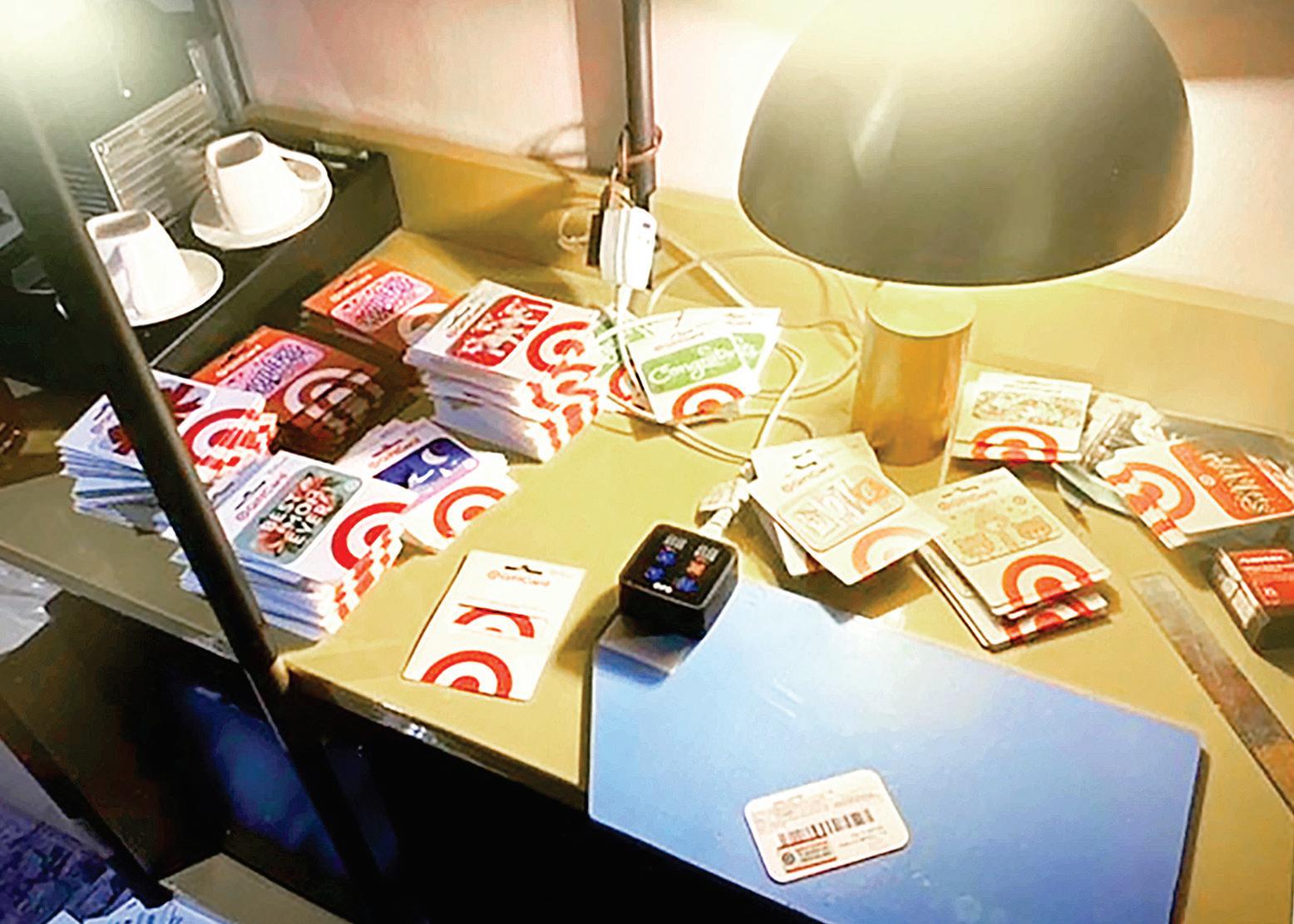
The waiting game. To compound the problem, many gift cards are not immediately used, and the victim may not know that the card has been compromised for extended periods of time. “One of the primary issues is that victims are not good self-advocates,” adds Lowe. “Cards may sit in a drawer for months or even a year or more without being used, and when the victim attempts to use the card, the value is no longer available.”
It’s not difficult to see why. Research shows that 47 percent of American adults have unused gift cards, and the total value of these unspent funds in the US is around $23 billion. In fact, while most consumers use a gift card in its entirety within one month, 71 percent of people admit that at some point, they have held onto a gift card for at least one year after receiving it before attempting to use it.
What’s the crime? Further complicating the problem is the need for law enforcement to recognize the criminal act involved and determine how perpetrators should be charged. “For law enforcement officers, the primary problem is recognizing and understanding what crime has been committed,” said Lowe. “It can be a lot of work to build the case, generating the breadcrumbs to realize the specific crime that has been perpetrated, and how to approach it as part of the investigation.”
However, pursuing prosecution may not be as difficult as some believe. “While law enforcement may often be unclear on the best way to approach these cases, under most state laws, gift cards are treated like credit cards for the purposes of the fraud,” said Parks. “Charges can include tampering, counterfeiting, money laundering, wire fraud using the internet, and other statutes based on the individual situation. There are a variety of ways law enforcement can approach it.” Considering the hurdles, it’s easy to see how gift card fraud operations can become highly lucrative for fraudsters,
with cases regularly resulting in multi-million-dollar investigations.
“Retailers and gift card companies are currently working on a number of countermeasures to stop or slow down fraudulent activity and deter gift card fraud,” said Lowe. Here are some current steps that can be taken to deter gift card fraud in retail stores:
● Employee awareness and education. Make sure that store associates are aware of the problem and common ways that gift cards can be manipulated. Looking for the warning signs of card tampering at the point of purchase can deter many potential incidents.
● Placement of gift card kiosks. Place kiosks in plain view of register areas. Greater awareness of customer activity at the card kiosks and the power of customer service will deter many in-store incidents.
● The use of physical security measures. Signage and camera systems can help
deter and detect incidents in the stores.
● Pay closer attention to the appearance of the cards. “Whether an employee or customer, treat gift cards like you treat produce,” said Parks. “Inspect the cards for signs of tampering, damage, or discoloration.”
● Buy online gift cards directly from the retailer. This limits opportunities for tampering and abuse.
● Redesign gift cards with new security features. Retailers and gift card companies are working together to redesign cards to mitigate opportunities for tampering. For example, some new cards feature a blank space where a cashier will apply a sticker with the access code once the card is purchased. Without those codes stuck to the gift cards, there will be nothing for a scammer to steal.
The Alachua County investigation set a standard in the state of Florida, successfully concluding with convictions of both suspects. In the same respect, it also

underscores the essential importance of networking, teamwork, and cooperation when building and managing these sophisticated cases. “There was communication and cooperation every step of the way,” shares Parsons. “The importance of networking, understanding the resources available to you, having a plan, and working together makes these cases possible. They helped us determine what we should be looking for, what was needed to build the case, and how we needed to follow up and maintain persistence to follow through.”

Jacque Brittain, LPC, is editorial director for LP Magazine. Prior to joining the magazine, he was director of learning design and certification for Learn It Solutions, where he helped coordinate and write the online coursework for the Loss Prevention Foundation’s LPC and LPQ certifications. Earlier in his career, Brittain was vice president of operations for one of the largest executive recruiting firms in the LP industry. He can be reached at JacB@LossPreventionMedia.com
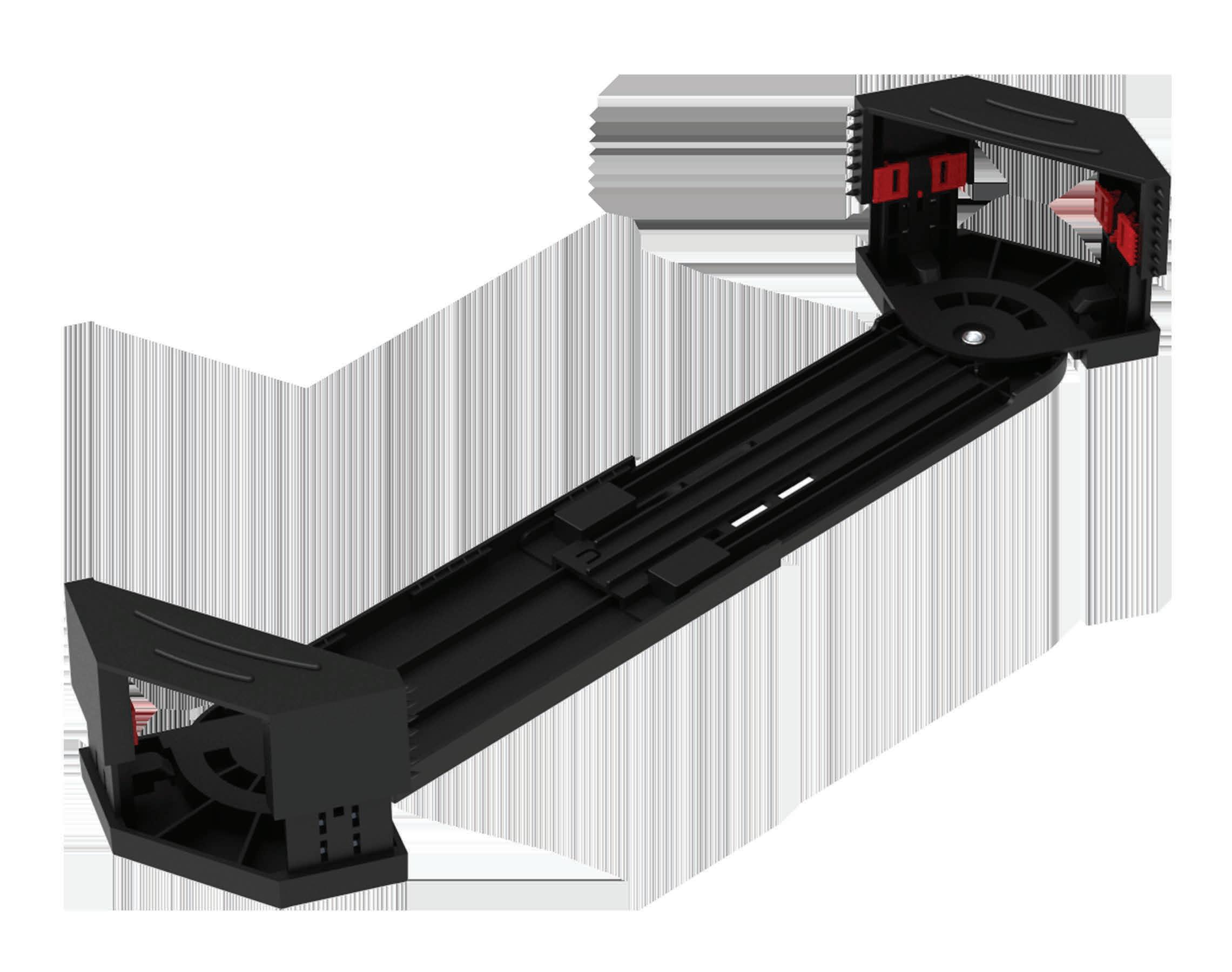


By Tom Meehan, CFI
Establishing productive long-term relationships with vendors and partners is one of the most important aspects of successful retailing. This process has always been challenging as choosing a vendor or solution partner is, in some ways, a leap into the unknown. All vendors emphasize the positive aspects of their products and services, but buyers must often find out the negative side through experience after the contracts have been signed. To make things even more challenging, the buying landscape has changed dramatically in recent years. Twenty-five years ago, most transactions were straightforward “box sales,” involving a single capital expenditure for a product. Today, most solutions involve ongoing subscriptions, server costs, and other recurring fees. As a result, the stakes involved can be much higher.
Given these changes, buyers cannot expect to deal with vendors the same way they did decades ago. The new landscape demands a different mindset and approach. Buyers must be more careful in their negotiations with vendors. Fortunately, the proven techniques associated with investigative interviewing offer a viable solution to this challenge—techniques that are already familiar to many in the loss prevention field.
Negotiations should be seen as opportunities for both parties to achieve positive outcomes. Each side has something the other wants or needs, and success comes from finding a mutually beneficial solution.
LP professionals routinely interview witnesses and potential suspects when a theft, fraud, or other security incident occurs. In an interrogation or interview, the goal is to uncover facts and reach the truth, not to “win” against the other person. Interviews can quickly devolve into unproductive adversarial standoffs if we focus too heavily on winning and losing rather than following a fair, established process that yields honest, accurate results.
The same approach can be very effective in negotiating with vendors or anyone for that matter. By appreciating the parallels between these two scenarios, you can apply best practices from one context to another to achieve more effective outcomes.
Negotiations should be seen as opportunities for both parties to achieve positive outcomes. Each side has something the other wants or needs, and success comes from finding a mutually beneficial solution. When an interrogation or interview follows a non-confrontational, empathetic framework, the outcome is often greater openness, cooperation, and clarity.
As with a loss prevention interview, doing preparatory research before meeting with the vendor is vital. It’s also important for interviewers to recognize the value of building rapport, clearly explaining both their personal role and their organization’s purpose. Additionally, benchmarking and
understanding industry standards play a critical role.
In a negotiation, the seller’s job is to offer a product or solution at a fair price, and the buyer’s job is to acquire that product under conditions that also make sense for them and their organization. Factors like price, quality, and delivery capabilities all matter. The old fashioned “meet in the middle” approach is becoming outdated. Instead, as with a structured, empathetic interview, adhering to a systematic process ensures that all parties arrive at a fair conclusion. Both sides feel respected, and both reach a result that aligns with the facts and the truth of the situation.
The importance of expertise and knowledge in acquiring a product or solution cannot be overstated. You may often understand more about the product’s functionality—or at least about your own business needs—than the person selling it. But it’s not always about who knows more; it’s about whether the product or solution truly addresses the problem at hand. Expertise instills confidence in the purchasing process, just as thorough investigation inspires confidence in an interrogation or interview scenario.
In both contexts, a productive exchange involves active dialogue, thoughtful questioning, and attentive listening. When evaluating a solution provider, conducting research, requesting references, and gathering feedback from trusted sources is essential. Similarly, in an investigative
Constantly citing brand names, awards, or certifications in place of showing tangible results or data can be a distraction tactic to appear more credible than the evidence supports.
setting, you follow a defined process, ensuring you enter the interview with as much information as possible. Although you may never know everything, approaching these situations as a well-prepared expert dramatically increases the likelihood of a positive and successful outcome.
Prospective vendors will gladly tell you the upside to buying their product or service. But what are they not telling you? It’s vital that you, as the interviewer, learn to identify the weak spots in a vendor’s presentation. This is where understanding behavioral cues becomes invaluable. In the loss prevention sphere, we’ve learned over the years that while behavioral indicators alone don’t confirm dishonesty or honesty, they can be highly informative. The same is true in negotiations. Observing someone’s behavior can’t guarantee a specific outcome, but it can guide you in understanding when a counterpart feels frustrated, uncomfortable, or hesitant. Recognizing these signals might prompt you to ask clarifying questions, reframe the conversation, or adjust your strategy.
During my 20-plus years in retail—both as a buyer and an influencer—I often sensed when a salesperson was avoiding a direct answer or struggling with a difficult question. Fast forward to my current position at CONTROLTEK, where I sometimes find myself in the seller’s role. I recently experienced a negotiation in which the buyer acknowledged that he was pushing too hard. Upon realizing this through our behavioral cues, he conceded that he might be asking for too much. His shift demonstrated emotional intelligence and a willingness to collaborate rather than compete. The conversation moved from a win-lose dynamic toward a more constructive dialogue, ultimately leading to a successful deal.
The same principles apply in investigations. I recall times when asking the same question to a vendor repeatedly only led to deflection. Recognizing the subject’s discomfort or resistance prompted me to step back and try a different approach. By paying attention to behavioral cues—both in negotiations and in investigations—you can identify when someone is uncomfortable or when the
process needs to change course. In doing so, you can transform the entire dynamic, ensuring a more productive and mutually beneficial outcome.
Identifying potential deception in vendor presentations involves paying close attention to both verbal and nonverbal cues, as well as the structure and content of the information provided. While none of these indicators are definitive proof of dishonesty, noticing patterns or clusters of such behaviors can help guide you toward asking more probing questions or seeking clarification. Some key areas to watch include:
1. Inconsistent or Evasive Responses
● Deflection: The presenter avoids giving a direct answer, frequently changes the subject, or uses vague language rather than addressing specific points.
● Overuse of Fillers: Repeated use of noncommittal phrases (“maybe,” “possibly,” “you know”) or unnecessarily complicated jargon can signal discomfort or a lack of substance behind the claims.
● Changing Stories: Details of their pitch or explanations for capabilities and pricing shift from one meeting or conversation to the next.
2. Overemphasis on Credentials Without Substance
● Name Dropping and Credentials: Constantly citing brand names, awards, or certifications in place of showing tangible results or data can be a distraction tactic to appear more credible than the evidence supports.
● Lack of Supporting Data: If they repeatedly claim market dominance or unparalleled quality without offering verifiable metrics, case studies, or reference contacts, it may signal they’re inflating their capabilities.
3. Nonverbal Signs of Discomfort or Uncertainty
● Shifts in Body Language: Sudden changes—such as leaning away, crossing arms, touching the face (especially nose or mouth), or fidgeting—when certain topics arise can indicate unease.
● Facial Expressions: Forced smiles, rapid blinking, or inconsistent eye contact when answering tough questions can signal nervousness or uncertainty.
4. Inconsistent Tone and Cadence
● Rushed or Hesitant Delivery: Speaking
If they deflect requests for customer references, testimonials, or live product demonstrations—especially after initially agreeing to provide them—it can be a red flag.
too quickly when discussing complex details or hesitating significantly when asked for specifics may indicate uncertainty or an attempt to gloss over weak areas.
● Forced Enthusiasm or Defensive Posture: If the presenter becomes overly defensive or too cheerfully insistent after being challenged on a point, they may be compensating for a lack of solid evidence.
5. Resistance to Third-Party Validation
● Avoidance of References or Demos: If they deflect requests for customer references, testimonials, or live product demonstrations—especially after initially agreeing to provide them—it can be a red flag.
● Hesitation on Proof of Claims: Lack of willingness to provide documentation, test results, or objective benchmarks suggests the story may not match reality.
6. Mismatched Details or Lack of Internal Consistency
● Contradictions in Information: Presentations that contain contradictory statements about features, timelines, or total cost of ownership may indicate rushed or fabricated claims.
● Unrealistic Promises: Overly optimistic delivery schedules, unusually low pricing without a clear rationale, or claims of “the perfect solution to every problem” should prompt further scrutiny.
7. Difficulty Handling Probing Questions
● Shifting Blame or Responsibility: If they sidestep direct accountability (e.g., blaming the market, unnamed partners, or vague supply chain issues) when asked about failures or known industry challenges, it can be an indicator they’re not forthcoming.
● Emotional Responses: Becoming overly irritated, dismissive, or confrontational when asked to clarify important details may be a sign of discomfort with the truth.
While no single behavior is a sure sign of deception, noticing multiple, consistent indicators can prompt you to dig deeper. It’s wise to follow up with more direct questions, request supporting evidence, and consult objective references or industry benchmarks. Over time, your keen observation and informed questioning strategy will help ensure you separate well supported claims from those that may be misleading.
At the same time, it is important to realize that individuals can behave in ways that seem suspicious but are simply expressions of their unique personalities. As the following section explains, there are reliable ways to recognize that.
When behavior analysts work with patients, they typically begin by establishing the patient’s behavioral baseline. Through multiple interactions, they can determine the frequency, duration, and intensity of behaviors that are deemed problematic, enabling them to measure their progress after treatment begins. In our interviews with a potential vendor, we’re not trying to change the person’s behavior, but we can still benefit by creating a baseline behavior assessment. This is simply a broad understanding of how the person typically behaves. Then, when they deviate and respond in a way that seems out of character, it could indicate that they’re hiding or avoiding something.
During my career, I’ve conducted well over a thousand interviews. Two examples from my experience can highlight the importance of recognizing baseline behaviors—and not jumping to wrong conclusions.
Example 1: The Stoical Interviewer. While working in retail, I once joined my boss, the company vice president, in a meeting with a young salesperson who was presenting a solution to us. My boss was an industry veteran with a reputation for being stoic, reserved, and detail oriented. The salesperson was visibly nervous. He faced a leader who rarely spoke unless necessary and barely displayed emotion. But at the end of the presentation, the vice president simply said, “Great. When can we get started?”
Later, the salesperson confided in me that he found the interaction nerve-racking. He couldn’t “read” us, and my boss never even smiled. I explained the importance of understanding who he was dealing with. My boss, although quiet and reserved, was one of the warmest people I’d ever worked for—but the salesperson’s assumptions led him astray. He was thrown off by a communication style he didn’t recognize and ended up misinterpreting the behavior.
Example 2: The Presumptuous Presenter. In another instance, when I was serving as a buyer, I dealt with a very assertive salesperson who bluntly stated that he could tell I wasn’t interested because I wasn’t making direct eye contact. What he didn’t know was that I have a significant visual impairment. If someone is more than a few feet away, I have trouble focusing on their exact position. Not only was this embarrassing, but then I felt the need to explain myself because of his aggressive stance. I pointed out that if he hadn’t been sitting fourteen feet away at a large conference
table, I could have made better eye contact.
Unfortunately, the damage was done. The conversation took a downturn as everyone else in the room was put off by his approach. If he had taken a moment to understand my baseline—a visual challenge that affected my gaze—he might have interpreted my behavior differently.
These examples underline why understanding baseline behavior matters. Studies show that behaviors aren’t always accurate indicators of deception. You never know what factors might be influencing someone’s demeanor. They may be introverted, feeling unwell, having a bad day, or dealing with a disability that affects their eye contact. Any of these could lead you astray if you rely too heavily on reading behavior instead of following a sound, established process. Then, when we notice deviations from a person’s baseline behavior, that can be a cue to inquire further.
In a multi-month negotiation or a long-term professional relationship, you may learn enough about a person to recognize their “normal” behavior. But in many negotiations, you don’t have that luxury. If you don’t have time to establish a baseline or truly understand someone’s communication style, it’s best to rely on a proven, structured process. For interviews and interrogations, methods like the Wicklander-Zulawski non-confrontational approach are effective. Similarly, proven negotiation strategies can help you remain grounded, confident, and focused on the facts rather than assumptions.
In short, while paying attention to behavior can be useful, overanalyzing it or relying on it alone can derail both interviews and negotiations.
Understanding someone’s baseline, when possible, and consistently following a well-structured process will guide you toward more successful outcomes.
Building rapport is the process of establishing a relationship based on trust, understanding, and mutual respect. In professional settings—such as negotiations, interviews, or client meetings—it’s essential to create a positive connection without becoming overly familiar or losing sight of your role and responsibilities. Balancing approachability with professional boundaries can lead to more productive conversations, smoother negotiations, and better decision making. Key elements include the following:
● Respectful Communication: Use clear, considerate language and demonstrate active listening. Show that you value the other party’s time and opinions by acknowledging their points, asking clarifying questions, and carefully considering their perspective before responding. Tone of voice, body language, and attentiveness all convey respect and build trust.
● Empathy and Understanding: Empathy doesn’t mean abandoning professional objectivity; rather, it means recognizing and validating the other person’s feelings or concerns. By signaling that you understand the challenges they face—even if you don’t share their viewpoint—you establish a foundation of goodwill, making the other party more receptive to your own points.
● Professional Boundaries: While warmth and relatability foster rapport, it’s essential to maintain an
While no single behavior is a sure sign of deception, noticing multiple, consistent indicators can prompt you to dig deeper.
appropriate level of formality. Avoid personal disclosures that may distract from the professional context or imply favoritism. Consistency in demeanor, adherence to established protocols, and the use of polite, professional language all reinforce the sense that you are reliable and even-handed.
● Clarity and Transparency: Being straightforward about goals, processes, and expectations helps preserve professional distance and credibility. Openness about what can and cannot be achieved reduces misunderstandings and ensures that the rapport you build is based on honesty rather than hollow promises.
● Focus on Mutual Interests: Highlighting common objectives—such as solving a problem, reaching a fair agreement, or improving efficiency—fosters a “we’re in this together” mindset. This shared sense of purpose encourages cooperation while maintaining the roles
and responsibilities that define each party’s professional standing.
● Consistency and Follow Through: People trust those who do what they say they will do. Following through on commitments, meeting deadlines, and upholding standards all reinforce a sense of professionalism. By consistently acting with integrity, you encourage the other party to engage with you on the same terms, solidifying rapport without blurring boundaries.
Building rapport while maintaining professional distance is an art that involves balancing warmth with reserve, empathy with neutrality, and friendliness with firmness. By treating people respectfully, communicating with clarity, and honoring the structures that guide professional interactions, you cultivate productive relationships rooted in trust—without compromising the integrity, objectivity,
and authority that define your professional role.
These techniques, proven effective in loss prevention and law enforcement, can be used successfully in negotiation with vendors. And when they lead to mutually profitable relationships, the benefits to all parties will be long-lasting.

Tom Meehan, CFI, is the retail technology editor for LP Magazine as well as CEO of CONTROLTEK. Previously, Meehan was director of technology and investigations with Bloomingdale’s, where he was responsible for physical security, internal investigations, systems, and data analytics. He currently serves as the chair of the Loss Prevention Research Council’s (LPRC) Innovations Working Group. Meehan is the published author of his book titled Evolution of Retail Asset Protection: Protecting Your Profit in a Digital Age. He can be reached at TomM@LossPreventionMedia.com.

The LP Magazine Founders’ Awards offer a means to celebrate industry accomplishments on an ongoing basis, recognizing the loss prevention professionals, teams, solution providers, law enforcement partners, and others who demonstrate a stellar contribution to the profession.
The ability to influence change is a product of drive, creativity, and determination, but it also requires a unique ability to create a shared vision that others will understand, respect, support, and pursue. Each of the following recipients reflects that standard of excellence, representing the quality and spirit of leadership that makes a difference in our lives, people, and programs. Please join us in celebrating the accomplishments of our latest honorees.

EXCELLENCE IN PARTNERSHIPS

David Thompson, CFI
President at Wicklander-Zulawski & Associates
“Be who you say you are, and do what you promise to do,” says Thompson. “A reliable partner is not just someone who completes tasks on time but is consistent and transparent in who they are and what they stand for. It can be easy in a fast-paced, competitive environment to lose your purpose and focus, but the strongest partners are those who are reliable in their character and their commitment to their peers and guided by their passion.”
Thompson’s passion for professional development is something he sees as a pillar of leadership. “Never stop learning and challenging yourself to grow,” he says. “True leaders are humble and vulnerable enough to know their opportunities but dedicated enough to work through them. They take accountability for their own development and learn to gain comfort in uncomfortable situations. If you always feel comfortable in your current role, are you really challenging yourself?
“A ‘leadership role’ is not defined by a title, but rather by our influence on others. Today’s colleagues are the leaders of tomorrow. Our industry is always evolving, and aspiring leaders must be proactive in driving their teams forward. The obstacles we deal with today are different from twenty years ago and will continue to change. True leaders recognize the opportunity for growth and take on those challenges with a proactive mindset.
“Seize the opportunity and accept encouragement as a gift. Over a decade ago, I was serving on a committee that needed a volunteer to speak at a conference. Without a plan, I enthusiastically raised my hand and said, ‘I’ll do it!’ The conference was Elite Training Days, and it led me to a job interview a few weeks later. Today, I have this unbelievable opportunity to lead our organization—all because I took a chance and had a supporting cast of incredible people who were there for me every step of the way.”
EXCELLENCE IN LEADERSHIP AND PARTNERSHIPS

Paul Jones, LPC Director of Sales, Eastern US, at Gatekeeper Systems Vice Chairman of The Loss Prevention Foundation
“To be a true leader, you need to work hard, listen well, participate in industry initiatives, and develop relationships,” says Jones. “But there’s something more. Throughout my career I’ve watched and worked with some of our best LP leaders. I’ve seen the commitment and flexibility—how they interacted with others, assumed responsibility, and shaped our industry. They accepted the challenges no one else wanted, stepping out of their comfort zone to learn new ideas and creative ways of approaching what we do. That’s what it takes to lead. Make it part of your DNA.”
Paul began his LP career as a store detective. “I started walking the floors at $3.75 an hour and grew from there. As I climbed the ladder, learned new things, and took on new roles, I always understood the value of investing in people. I knew that it was the people who helped and supported me that would make the difference.” This led to top leadership positions with several retail companies and critical roles with organizations supporting retail loss prevention. Since 2007 he has been a board member with The Loss Prevention Foundation, where he currently serves as vice chairman. For those looking to climb the career ladder, Paul suggests you always look for ways to invest in yourself. “Continue learning and stay informed. Find a mentor and be a sponge. Have a sound mind and steady hand in decision-making, but understand you are only as good as your team. Surround yourself with diverse minds and people. Listen more than you talk and focus on the end result. Be authentic, and remember your word is your bond—keep it. Finally, be willing to give back. Always be willing to help the next generation of leaders. Our industry is special—let’s keep it this way and work well together.”

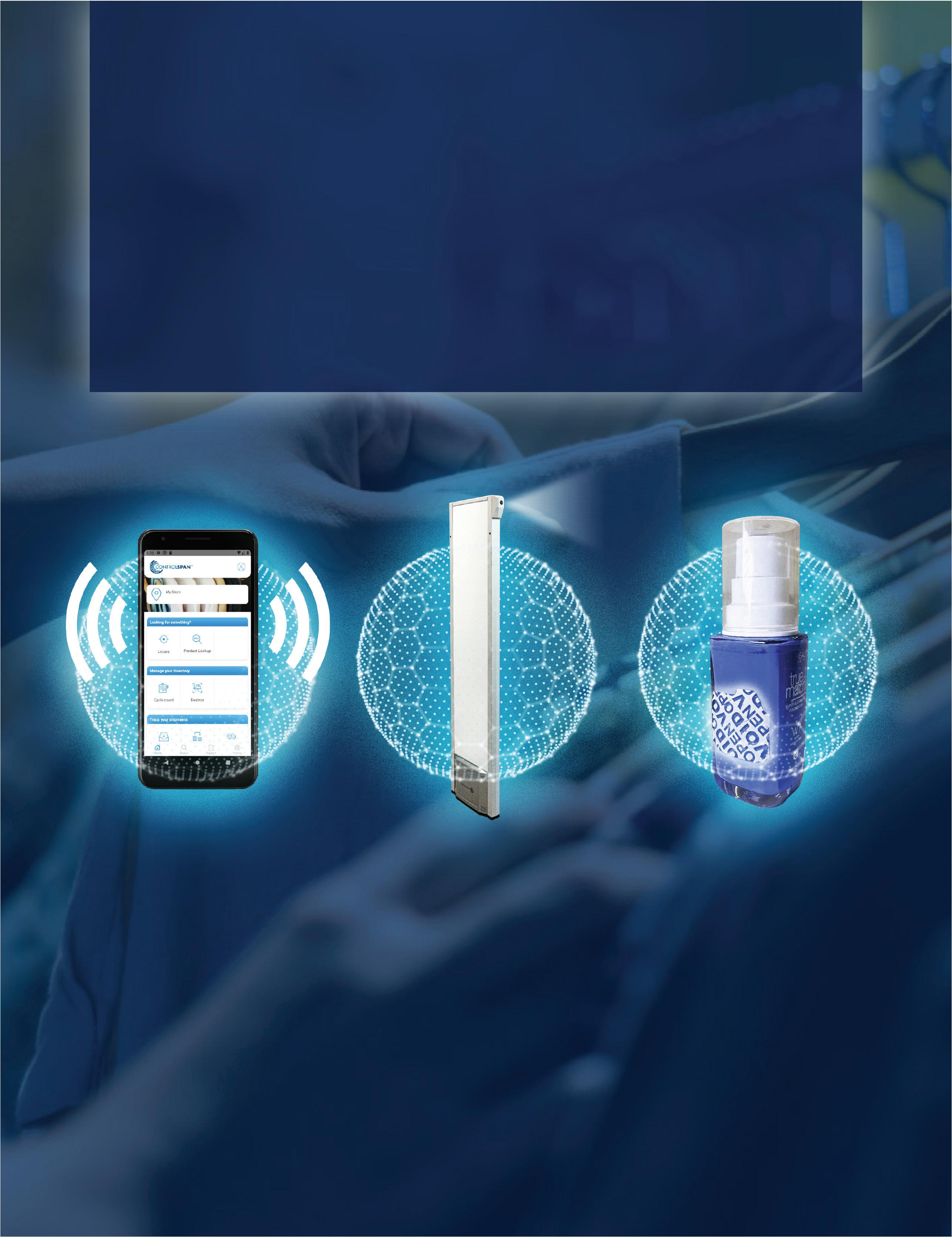


Dr. Leslie Allen, CFI, is the senior director of loss prevention at Footlocker. She received her doctorate in Criminal Justice from Saint Leo University. With years of experience investigating fraud, theft, and total loss in retail, she now leads a team of auditors and investigators in identifying and mitigating fraud, theft, and scams. She is committed to educating and helping create safer shopping and working environments and inspiring others to go higher.

When I was young, I was always fascinated by the law. I envisioned myself in a courtroom, using my passion for justice to advocate for those who needed help. I dreamed of becoming an attorney, fighting cases that would make a real difference. But life, as it often does, led me down a different path.
After serving honorably in the US Army as a military police officer, my life took an unexpected turn. Like many veterans, I was honorably discharged and faced the challenge of transitioning into civilian life. During this time, a friend suggested I investigate a career in loss prevention. I had no idea what LP was then, but it seemed intriguing. It offered an opportunity to use my investigative skills, work with people, and keep up my physical fitness by chasing down shoplifters in my early days.
My work in LP had taught me how to investigate and interview, follow a trail of evidence, and analyze patterns in criminal behavior.
What began as an entry-level role evolved into a full-fledged career that aligned with my skills and interests and sparked a deep fascination with security, fraud, theft, risk management, and investigative processes. In time, that fascination grew into a specialized focus: the study of phone scams. This seemingly random interest would ultimately become the catalyst for a journey I never expected: the pursuit of a doctorate.
It all started with a phone call. Like many others, I had received various scam calls over the years—offers that seemed too good to be true, threats from “official” organizations demanding payment, and promises of big winnings that required a personal investment. But it wasn’t until a string of increasingly sophisticated scams began to plague not just my own phone but the phones of many stores and employees within my retail organization that I started to pay closer attention.
As I delved deeper into the issue, I realized how much of a threat these phone scams posed to vulnerable individuals and other retailers. These

LP is all about identifying risks, understanding how they develop, and finding ways to mitigate them.
weren’t just petty criminals trying to swindle a few bucks; some of the more sophisticated scams were part of more extensive, sophisticated, organized operations. And with technology constantly evolving, it was clear that phone scammers were growing more intelligent, using everything from caller ID spoofing to social engineering techniques to exploit their victims.
This problem had serious implications not only for individuals but also for businesses, law enforcement, and entire sectors of society. The more I learned, the more I felt compelled to explore the phenomenon in a systematic way. After all, LP is all about identifying risks, understanding how they develop, and finding ways to mitigate them. In this case, the “risk” was fraud, and the consequences were far-reaching.
I had spent years working hands-on in the field, dealing with various forms of fraud, theft, and security breaches, but now I wanted to understand the theoretical side of these crimes—especially when it came to phone scams. I decided to pursue formal education, and through a series of steps that included obtaining certifications, completing courses in criminal justice, and working with experts in the field, I began to narrow my focus on the specific dynamics of fraud through telephone communications.
My work in LP had taught me how to investigate and interview, follow a trail of evidence, and analyze patterns in criminal behavior. Now, I needed to understand the psychological and technological aspects of phone scams. What made people
susceptible to these types of fraud? How were scammers able to manipulate their victims into handing over personal information, gift cards, money orders, or cash? And what could be done to combat these increasingly sophisticated operations?
I ultimately pursued a doctoral program in criminal justice, concentrating my research on phone scams, fraud prevention, and the relationship between technology/scammers and human behavior. My studies revealed that phone scams are not solely a criminal nuisance; rather, they represent a complex, global issue that necessitates coordinated efforts from law enforcement, businesses, and consumers alike. A considerable portion of my research was informed by rational choice theory and the fraud triangle theory, which provided a theoretical framework for understanding the dynamics of fraud.
My dissertation, titled A Qualitative Study of Phone Scams in a Retail Environment, took a deep dive into the elements of these scams, from the strategies scammers use to the psychological manipulation techniques they deploy. I completed focus groups, analyzed trends, and worked with victims to understand their experiences. Ultimately, I proposed
I began to see LP as a field that could address physical theft in retail environments and the growing dangers of cybercrime, identity theft, and digital fraud.

My research and academic work gave me a broader understanding of fraud prevention beyond traditional theft and security.
a multi-faceted approach to combating phone scams that included:
1. Change the internal operational controls and force the offender to exert more effort to complete a phone scam.
2. Significantly increase employee training on the elements of a phone scam and how to recognize and react.
3. Identify and eliminate internal opportunities for employees to benefit from phone scams.
4. Train managers to spot collusion and internal fraud.
5. Fortify the capable guardian team by commandeering help from law enforcement, human resources, LP, all employees who answer the phones, and the executive teams.
Obtaining a doctorate was challenging. Research is a long, demanding process, especially when balancing academic commitments with a full-time career. However, it was a journey that deepened my expertise in LP and reinforced my belief in the power of education to open doors—sometimes even doors I never expected to find.
Earning my doctorate didn’t just change how I viewed phone scams—it changed how I view LP. My research and academic work gave me a broader understanding of fraud prevention beyond traditional
theft and security. I began to see LP as a field that could address physical theft in retail environments and the growing dangers of cybercrime, identity theft, and digital fraud.
Today, I continue to work in LP, but I’ve expanded my role to include advising organizations on protecting their employees and customers from phone scams and other forms of fraud. The lessons I’ve learned over the years—both in the field and academia—have been invaluable. My journey from a military police officer to an LP expert to a scholar has been unconventional but gratifying. It’s also a testament to the power of curiosity, persistence, and a willingness to adapt. Who would have thought that a simple interest in phone scams would ultimately lead me to a doctorate?
From a young girl who dreamed of becoming an attorney to a researcher who now holds a doctorate in criminal justice, my journey has taken me down unexpected paths. But it has allowed me to combine my passion for the law, my investigative expertise, and my desire to make a real difference.
And to think—it all started with a phone call.
I am incredibly proud that my mom accompanied me on this journey and was called home shortly after I crossed the stage. Her unwavering support inspired me to finish, and I am eternally grateful for her encouragement. The work I do will always honor her legacy.
Whether you’re protecting a single storefront, a high-traffic retail center, or a nationwide chain, our integrated security, fire, and life safety systems can provide an end-to-end defense against intrusions, theft, loss, and emergencies.


LP Magazine is recognizing the unsung heroes of the loss prevention and asset protection industry. In an ongoing column, we will highlight those among us who are going above and beyond to help their community and world around them to be a better place. Whether it be an individual or a team, donating time, money, or bringing joy to others—we want to say, “thank you” and let our readers get to know you better. To nominate an individual or an entire LP team, fill out the form at losspreventionmagazine.com/something-good.
“We’re trying to show the communities that we serve that we’re here for them and understand the importance of working together. We’re here as a community partner—not just a business turning a profit.”
That’s the message behind the “We Push for Peace” project, something that Ted Fancher III, LPC, divisional director of asset protection and safety at Whole Foods Market, is very passionate about. “As a non-profit based out of Minneapolis, the program began as a violence intervention initiative following the George Floyd incident and the community unrest that followed,” he says. “But as we continued to tweak the program with the support of our employees, customers, and communities, it has evolved into much more than we ever anticipated it would be.”

had trouble finding employment over the last 10-15 years. ‘We Push for Peace’ can hire and train them to work in our stores, offering them the chance they need. It’s an opportunity to prove yourself, find meaningful work, and earn a living that supports your family.”
Fancher believes the program is not only proving successful but adds a positive message to the culture of the stores. “People can make poor decisions, but they’re very capable of learning from their mistakes. They deserve a second chance—and what they make of it is then up to them. Any way we can support our communities and guide the people in a better direction is a good thing—and the people are responding.”
More than a violence intervention initiative, the program has a strong focus on community engagement with events such as annual turkey drives with the support of local police departments, back-to-school events that have provided hundreds of backpacks and nutritious meals for students, and the sponsorship of families during the holiday season.
In the stores, the program looks to focus on the power of community to help managet LP challenges in troubled urban locations and establish a better relationship with the neighborhoods they serve.
“Rather than utilizing traditional guard services in these locations, we have a program that uses store greeters that welcome customers as they enter the store,” explains Fancher. “We hire individuals that live in that specific neighborhood who know the people and the players, making for an easy transition and a comfortable interaction. Depending on the needs and risks associated with the individual locations, we may also have a rotator that walks around and assists customers throughout the store, specifically in problem areas.”
However, the program takes an additional step that adds a unique twist to the program.
“For these critical roles, we’re hiring people that may have been down on their luck—people who have had some trouble finding jobs and deserve a chance to show their potential and make a positive impact,” he continues. “It may be someone who made a mistake or had troubles in their past. Maybe they did something minor they regret when they were eighteen years old and have
It’s been a win-win partnership and a tremendous resource for us. Our employees love it. They like to see that we’re taking creative approaches.
Employees are trained in proactive LP principles, customer service concepts, and de-escalation techniques. They are encouraged to have positive interactions and show all customers respect. It’s a community-based strategy intended to help redirect and better understand the customer’s purpose when they enter the store.
“Police officers in these communities are stretched too thin, and retail has to continue to evolve in creative ways to effectively deal with a changing society,” says Fancher. “That’s the beauty of it—these employees know the communities and the people. It gives us an opportunity to intervene before issues occur.”
The “We Push for Peace” initiative started in 2020 with three stores in Minneapolis and has grown to serve more than twenty stores in markets across the country, with more coming on board over the next year.
“It’s been a win-win partnership and a tremendous resource for us. Our employees love it. They like to see that we’re taking creative approaches. They believe in the purpose of the program and the message we’re sending, and it’s paying huge dividends in these communities. We’re very excited about what we’ve accomplished thus far and look forward to seeing what it brings as we move forward.”
In today’s ever-evolving security landscape, the ability to harness crime risk data is critical for organizations across industries. Whether safeguarding executives, protecting employees in the field, or securing facilities, leveraging actionable insights can transform operational efficiency and decisionmaking. This article explores how organizations can unlock the power of crime risk data to evaluate threats, optimize resources, and enhance safety across various domains, all starting with the Security Operations Center (SOC).
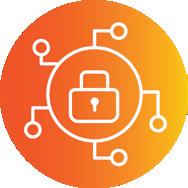
Security Operations Center (SOC): The Heart of Risk Management
Modern SOCs are at the forefront of monitoring and managing risk. Acting as a central hub, SOCs provide a unified view of risk data, enabling organizations to visualize and act on threats in real time. With comprehensive, integrated crime risk data, SOCs empower security teams to:
● Visualize Risk Everywhere: Gain a dynamic view of crime risk across all your assets and locations, from facilities to field operations.
● Optimize Resource Allocation: Deploy security resources strategically, ensuring that high-priority areas receive adequate attention.
By centralizing data within the SOC, organizations establish a foundation for effective security operations and informed decision-making. The SOC acts as the nerve center that connects all aspects of risk management, enabling seamless coordination across executive protection, facility security, and beyond.

Recent high-profile incidents have reinforced the need to protect an organization’s leadership team. With crime risk data, your team has actionable insights that better protect executives in various environments as well as when they are on the move. Key benefits include:
● Informed Planning: Detailed crime risk assessments for residences, offices, and travel routes help develop tailored security protocols.
● Resource Optimization: Security resources are allocated effectively to ensure maximum protection without overextending the team.
With real-time data driving decisions, organizations can protect their executives more effectively while maintaining operational efficiency.

Ensuring the safety of employees while traveling is a growing challenge.
Organizations using crime risk data enhance travel planning by:
● Choosing Safe Accommodations: Evaluate local crime trends to select hotels and lodging options that prioritize employee safety.
● Enhancing Mobility Planning: Provide staff with guidance on safe travel routes and help them avoid high-risk areas during their journeys.
By embedding crime risk evaluations into travel planning processes, businesses can safeguard their workforce and reduce the anxiety associated with travel risks.

A secure supply chain is critical to maintaining operational continuity. Organizations use crime risk data to protect their logistics by:
● Minimizing Vulnerabilities: Identify potential risks at storage facilities, along transportation routes, and within distribution centers.
● Planning Secure Delivery Schedules: Align delivery and transportation operations with crime risk insights to reduce theft and delays.
● Identifying Appropriate Delivery Protocol: Knowing the risk helps determine if a delivery should require signatures, be delivered to an alternate, secure location, or take other appropriate measures. Proactive supply chain management not only protects assets but also ensures uninterrupted service delivery.

Field teams, such as technicians and delivery crews, often work in unfamiliar or high-risk areas.
With crime risk data, organizations can:
● Evaluate Area Safety: Analyze local risk metrics to ensure teams are operating in safe environments.
● Plan Routes and Schedules: Optimize travel paths and job timings to enhance safety and efficiency.
● Right-Size Teams: Adjust the size of field teams based on the risk profile of each assignment. These measures not only protect employees but also enhance customer

satisfaction by ensuring smooth service delivery.

Choosing new business locations involves balancing opportunity with safety. With crime risk data, businesses have the insight necessary to:
● Assess Suitability and Safety: Evaluate potential sites using crime and demographic data while also considering nearby points of interest that may positively or negatively impact risk.
● Compare Markets: Analyze multiple locations to determine the best option for expansion, balancing business potential with safety concerns.
Informed site selection ensures organizations make confident, strategic decisions that protect employees, customers, and assets. It also ensures that the organization is cognizant of the level (and cost) of
security measures required to protect the location should it proceed with development plans.

Facility security is essential to protecting both employees and customers.
With the help of crime risk data, organizations can:
● Mitigate Workplace Violence: Identify high-risk factors and implement preventive measures to reduce incidents.
● Develop Proactive Strategies: Create tailored security protocols and incident response plans that address specific vulnerabilities. Leveraging these insights not only enhances safety but also fosters a sense of trust and confidence among employees and patrons.
Knowing your crime risk is the cornerstone of modern security strategies, from SOC functionality
to executive protection and beyond. Starting with the SOC as the central hub, businesses can seamlessly connect all facets of their risk management framework. By integrating actionable insights into every aspect of their operations, organizations can optimize resources, mitigate threats, and build a safer environment for employees and customers alike, ensuring resilience in an increasingly complex security landscape.




By Allie Falk
Let’s be honest—we live in a money-driven society where the quest to “get rich” can lead to the most absurd and unexpected ventures. For some, it’s been selling virtual real estate in the metaverse, launching bizarre “hype” products like caffeinated toothpaste, or even creating AI-powered pet influencers where making enough money came effortlessly. But what about those who are still grinding away just trying to make ends meet? Or, more specifically, what about those in loss prevention working shifts that don’t always follow the traditional 9-to-5, often sacrificing nights, weekends, and holidays to keep businesses safe? Those showing up day in and day out but find themselves asking, Am I earning enough? Should I be pushing for a raise—or maybe an even bigger one? Or, in the worst case, Do I need to start looking for a new job?



According to a 2023 survey by Glassdoor, 53 percent of employees in the United States feel they are underpaid for the work they do, with many citing a disconnect between their responsibilities and compensation. This perception of being underpaid spans across various industries, including the vital field of loss prevention, where professionals often find themselves working hard without adequate recognition or financial reward.
Lance Incitti, CCIP, part of the executive search group at RPS of NJ, said, “When I talk to candidates, they often tell me that they know they are not paid up to industry standards.”
This awareness has become increasingly accessible, thanks to the rise of salary transparency and resources available to employees. Incitti notes that employees are now more informed about how their pay compares to others in the industry, which can help clarify whether or not they are underpaid. But while employees may sense they’re being undervalued, it’s important to verify this with concrete data.
“Do your due diligence on the company and its competitors,” said Tracy Nini, president of West Coast Recruiting, the nation’s leading search firm for LP, security, and risk, and CEO of LPJobs, an e-recruiting site exclusively for LP and security professionals. “It’s now easier than ever to find out how much a company is budgeting for a role. Thanks to legislation in many states requiring employers to post salary ranges in
their job listings, you can uncover this information with a bit of investigation. Other sources include Glassdoor, Salary.com, SalaryExpert, Monster.com, Payscale, and several others.”
To make sure you’re being paid fairly, it’s essential to keep track of both your salary and the wider market trends.
If you haven’t received a raise in years, that is likely a red flag. Regular salary reviews are key to keeping your pay aligned with your growing skills and market trends. If your pay hasn’t budged with inflation or the cost of living, your real income might actually be shrinking, even if the number on your paycheck stays the same.
Another sign to watch out for is if you take on more responsibilities but your salary remains the same. As your role evolves and your workload increases, your pay should reflect those changes. If it doesn’t, it may be time to have a conversation with your employer about adjusting your compensation.
Recognizing that you may be underpaid can put you in the uncomfortable position of needing to ask for what you truly deserve. But here’s the catch: By selling yourself short, you’re not just leaving money on the table—you could also be hindering your long-term career growth. The hidden costs of underestimating your worth go beyond a smaller paycheck; they can erode your confidence and job satisfaction and limit the opportunities that come your way. Understanding your
value is crucial, and doing so can have a significant impact on both your financial and professional future.
“There are the obvious financial consequences of not only being underpaid currently, but your company using your salary as a base for future increases—therefore being underpaid in the future,” said Mike Reddington, CFI, president of InQuasive, a company focused on professional coaching and training. “For me, the real consequences are psychological and perceptive. If an employee undervalues themself, they run the risk of thinking less of themself, their capabilities, and their worth. Therefore, their confidence and self-image may be lower, which in turn can be detrimental to their performance and career growth. This can also be detrimental to how they are perceived by others. If an employee doesn’t recognize their worth and lowers their self-image, standards, performance, expectations, etc. as a result, both peers and supervisors may lower their expectations for the employee as well.”
Incitti echoed Reddington’s point, emphasizing that underestimating your value can lead to a lack of growth: “The cost of underestimating your worth as an employee can’t be measured in dollars and cents. Instead, it’s seen in the opportunities lost—both for the employee and the company. For the employee, it may mean missed chances for growth, learning, and new challenges.”
For a supervisor, underestimating an employee’s worth could mean missing the opportunity for an employee to truly
benefit the company. Incitti continues, “If a company or supervisor fails to recognize that an employee is undervaluing themselves, they risk losing the opportunity to develop and mentor that individual, which could ultimately result in losing a valuable employee altogether.”
Underestimating your worth in the workplace can be just as detrimental as overestimating what you deserve. Both extremes can lead to missed opportunities and unrealized potential. While underestimating yourself may result in stagnant growth and a lack of recognition, overestimating your value can set you up for disappointment and failed negotiations.
There is a term in psychology called “illusory superiority” or the “above-average effect.” This refers to the tendency of individuals to overestimate their abilities relative to others, often inflating their own knowledge and competence.
“IF A COMPANY OR SUPERVISOR FAILS TO RECOGNIZE THAT AN EMPLOYEE IS UNDERVALUING THEMSELVES, THEY RISK LOSING THE OPPORTUNITY TO DEVELOP AND MENTOR THAT INDIVIDUAL, WHICH COULD ULTIMATELY RESULT IN LOSING A VALUABLE EMPLOYEE ALTOGETHER.”
Lance Incittit, CCPI

When it comes to requesting a salary increase, it’s essential to be mindful of this human tendency to avoid falling into the trap of unrealistic expectations, which can set you up for disappointment. While recognizing your achievements is important, managing your expectations is equally crucial to ensuring you’re more satisfied with the outcome of salary negotiations.
“Being realistic is crucial for several reasons. If we set expectations too high and come across as demanding, we risk losing credibility and creating long-term issues,” said Reddington. “We also want to avoid emotional disappointment or becoming disillusioned with the organization. If that happens, it’s not the organization’s fault—it’s because we had unrealistic expectations to begin with.”
You can view salary negotiations as walking a tightrope between recognizing your worth and being in tune with what the company is able to offer. It’s not just about thinking you deserve a raise; it’s about what’s reasonable given the market, the company’s budget, and the value you bring to the table.
Reddington’s advice rings true when we look at the reality of salary negotiations, where both candidates and hiring managers need to stay grounded. Overestimating your value can lead to disappointment or, worse, strain the relationship with your employer. On the flip side, underselling yourself could mean settling for less than what you truly deserve.
“Candidates and hiring managers have to be realistic. You don’t go from a $50,000 to $80,000 salary overnight. Even with the most excellent review, you should expect to get maybe a 3 to 5 percent salary increase.”
It is crucial to know what is feasible for your role and industry. While aiming for a large salary jump might be tempting, it’s often more practical to expect gradual, steady increases over time.
Managing your expectations is crucial, but gathering information on typical salaries is also important to ensure you’re aiming for a reasonable range. This research helps you establish a baseline for what you should expect based on your role, experience, and location. Knowing the salary landscape in your industry and region ensures you

Tracy Nini
enter the conversation prepared with a realistic number.
“You want to be as informed as possible about typical salaries,” said Reddington. One way to do this is by looking at similar posted positions. Keep in mind, though, working in a big box store isn’t the same as working in a specialty store, and salaries in metro markets differ from those in suburban or rural areas. However, by comparing open positions and finding salary ranges, you can start to estimate what your range might be.
Doing your research helps you avoid falling into the “illusory superiority” trap when it comes to your salary, giving you a more informed view of where you stand compared to others in your field. Understanding the variations between locations, industries, and company sizes
can help you decide what is a fair salary increase request to bring to the table. This approach ensures you confidently enter salary negotiations, knowing you’re both informed and realistic.
Have you ever experienced a situation where your expectations let you down because you assumed things would go in your favor or that everyone involved was aligned with your perspective? Recovering from these disappointments is often more challenging than simply having an honest conversation upfront.
Addressing expectations early on can help prevent future disputes, unexpected setbacks, and damage to trust.
“I have always told my clients and candidates that transparency is the
best way to start a relationship,” said Incitti. “When there is transparency, there should be no surprises. All sides want to get the best deal possible, and that is understandable. After all, it is business.”
And when it comes to business, the conversation around expectations naturally extends to compensation. If you’re meeting the demands of the role and adding value, it’s only fair that the organization compensates you accordingly.
Reddington said, “If a candidate or someone I’m coaching is asked about salary expectations, I’d recommend responding with, ‘My salary expectations are that the compensation reflects the value this position brings to the organization.’”
Expectations should be mutual; hiring managers must also be transparent about the company’s compensation expectations from the start. Asking targeted questions to clarify these expectations can help streamline the process for both parties.
“When qualifying candidates, it’s important to align expectations on both sides,” said Nini. “A good approach is to ask, ‘What is the salary range for this role?’ or ‘What salary are you hoping to offer?’ It’s also essential to consider the salaries of others in similar roles, including supervisors, to ensure the new hire’s salary doesn’t exceed theirs—especially if there’s a significant increase.”
As you ask these questions, it’s important to note that, depending on your state, you may not be required to disclose your salary history. Over the past few years, there has been a growing movement across the United States to eliminate salary history inquiries as a part of the hiring process.
“With salary history bans in place in twenty states, we now ask candidates what they’re looking for in their next role, rather than inquiring about their current compensation,” said Nini. “In many states, even third-party recruiters can’t ask for salary history. As a part of our process, we define the total compensation package with the client and hiring manager, ensuring it aligns with both sides’ expectations as we qualify candidates.”
The idea behind these bans is that when employers base salary offers on a candidate’s past pay, it can reinforce
existing wage gaps—especially for women and minority groups. If someone was underpaid previously, that lower salary can carry over into new roles, continuing the cycle of inequality. By eliminating salary history questions, employers are encouraged to offer compensation based on the job’s responsibilities and market value rather than a candidate’s past pay.
“New legislation banning salary history inquiries is leveling the playing field by promoting pay transparency,” Nini explains. “This shift changes the negotiating process, as employers can no longer base decisions on an applicant’s past salary. The logic is that past pay discrimination, whether intentional or not, is perpetuated when employers consider previous salaries in their decisions.”
Asking for a raise can feel like walking a fine line. It goes beyond what you feel you deserve—it’s understanding the bigger picture and knowing how to sell your value in a way that speaks to your company’s goals. Think of negotiations as a game where strategy wins the day. With the right mindset and approach, you can make sure you’re not just asking for more—but positioning yourself for success.
“Whenever we focus on what we ‘deserve’ or what we’ve ‘achieved,’ it makes it easier for others to say no or justify not granting the raise or increase we’re seeking,” said Reddington. “Instead, it’s crucial to understand that the organization’s financial decisions are driven by the outcomes it values, which are tied to the budget at each level. We should frame our discussions in a way that aligns with these financial realities.”
According to Reddington, here are some effective ways to frame the discussion:
● Shift the conversation with your manager from immediate dissatisfaction regarding pay to a more productive discussion about positioning yourself for a raise.
● Start with a polite acknowledgment: “Thank you, I appreciate your feedback.”
Then, say, “I understand there’s a typical process for salary increases. What I’d like to do now is discuss what I need to demonstrate and achieve over a specific period to be considered for an increase.”
● Use a phrase like, “Please correct me where I’m wrong,” then outline
how you’re evaluated—key metrics, relationships, and beyond.
● Frame it from a development perspective: “I’d like to review where I’m excelling and where I can improve.”
If you’ve done your homework, you’ll be clear on your strengths. The feedback should emphasize these strengths as well as areas for improvement. By steering the conversation this way, you ensure that your manager recognizes the key factors used for evaluations and compensation. This puts you in a strong position to professionally ask for a raise based on what they value.
However, sometimes a salary increase isn’t the most beneficial option for everyone—other forms of compensation might be more valuable.
“When negotiating a raise, it’s important to consider the total compensation package, not just salary,” said Reddington. “If the raise is declined, think about other forms of compensation—extra paid time off, flex time, work-from-home options, or even benefits like mileage reimbursement or a company car. Instead of just focusing on salary, approach the conversation with a broader view: ‘Please correct me if I’m wrong, but based on our performance and compensation expectations, could we discuss other ways to adjust my package?’ This allows for more flexibility and might result in more valuable benefits than just a salary increase.”
But if you don’t receive the raise or compensation you’re looking for, Reddington emphasizes an important point to keep in mind. “Never give an ultimatum unless you’re prepared to act on it,” he advises. Telling someone, ‘If I don’t get X, I’m leaving,’ should only be said if you’re ready to walk away. Approach the negotiation with a long-term plan in mind. When you make your case, focus on the value your role brings to the organization—based on measurable outcomes and the factors they care about. Guide the conversation so that offering you a raise becomes the most logical next step, making it hard for them to deny your request without a solid justification.”
If you find that a raise is not on the horizon, it may be worth stepping back and considering asking yourself a more fundamental question.
At the end of the day, most of us want to find value in our work. For some, work-life balance is more important than pay, while others prioritize financial compensation. It’s vital to regularly reflect on whether your job is contributing positively to your life beyond the paycheck. This reflection is key for job satisfaction and overall well-being.
“Understand your needs and what’s important to you,” said Incitti. “Once you identify that, everything else will fall into place. Before you go to the table, you must understand those needs. If you’re happy in your job, and you love it, and you have everything you want in the job, then whether you get 2 percent or 10 percent shouldn’t be a big concern.”
As Reddington previously noted, there are times when additional financial compensation may not be the most pressing need. Instead, what might be more valuable could be benefits such as increased time off, greater flexibility, or other non-monetary perks that contribute to a better work-life balance and overall well-being. “When it comes down to whether you are being paid enough, that’s more of a personal question where you must think through where you are in your life, where are you in your career, where are you in your quality of life, your personal commitments, all these things that go into that,” said Reddington. “So, for me, I feel like getting paid enough goes beyond roles and responsibilities.”
The ideal arrangement should benefit not only you but also your superiors and the company as a whole, creating a mutually advantageous situation.
“Remember, your skills can solve the employer’s problems,” said Nini. “Instead of trying to ‘sell yourself,’ focus on having a mutual conversation that addresses their priorities and challenges while showcasing how your past successes can provide solutions. The job, its responsibilities, and the compensation package should be a good fit for you, just as you are for them.”
In a world where financial success often takes center stage, it’s easy to focus solely on the paycheck, the

WHEN NEGOTIATING A RAISE, IT’S IMPORTANT TO CONSIDER THE TOTAL COMPENSATION PACKAGE, NOT JUST SALARY.
—Michael Reddington, CFI
raise, or the next promotion. However, compensation is about more than just money. While salary is undeniably important, understanding your true worth and how your job fits into your broader life goals is equally crucial. Salary transparency, recognizing the hidden costs of undervaluing yourself, and knowing how to navigate negotiations are all vital aspects of achieving fair compensation.
Striking a balance between immediate financial needs and long-term career growth is easier said than done, but it’s worth working toward with tenacity. Sometimes, the value of a role isn’t measured just in dollars, but in the experience, career development, and work-life balance it offers. Asking yourself, ‘Am I making enough?’ can mean different things to different people.
Whether you’re negotiating a raise or assessing your current job, the right balance of salary, benefits, and job satisfaction can lead to a more fulfilling career and a more rewarding life

Allie Falk is assistant editor for LP Magazine where she focuses on social media, daily e-newsletters, interviewing LP experts for magazine articles, and crafting email blasts. Prior to LPM, she was a digital content marketing intern for Tyler Technologies, the leading CAD software provider in the US, where she was awarded ‘Spotlight Intern’. Allie received her bachelor’s degree in communications from the University of Detroit Mercy in 2022, where she was awarded Communications Student of 2022. She can be reached at AllieF@LossPreventionMedia.com
I
n recent years, the retail industry has faced a significant upsurge in crime and antisocial behavior, presenting challenges that extend far beyond financial losses. While the National Retail Federation’s 2023 Retail Security Survey reported the average shrink rate in the fiscal year 2022 rose to 1.6 percent, translating to a staggering $112.1 billion in losses, there was also the not-so-small matter of 88 percent of retailers reporting that shoplifters have become more aggressive and violent and the negative impact that this is having on employees on the shopfloor.

In the bustling world of retail, where change is the only constant, ensuring safety and security is a collective endeavor in which technology has an ever more important role to play. Reveal is at the forefront of addressing these challenges with cutting-edge body camera solutions, designed to deter crime and provide a reassuring presence on the retail floor. Our unique body cameras, characterized by their front-facing screens, have proven to be an effective tool in de-escalating potential conflicts, thereby enhancing the overall safety of retail spaces. In conjunction with our advanced digital evidence management software, DEMS 360, Reveal offers a comprehensive security solution that not only deters incidents, but also aids in documenting evidence for the successful prosecution of retail crimes.
As Reveal has expanded globally, we’ve observed firsthand how retail security challenges resonate across borders, from the bustling streets of the UK to the
expansive malls of the US. This global insight has refined our solutions, ensuring they’re robust, adaptable, and effective, no matter the setting. Central to our success is our unwavering commitment to collaboration. By actively listening to our customers, diving deep into their unique challenges, and crafting tailored solutions, we’ve established durable partnerships throughout the retail industry.
Proof-of-concept trials are a cornerstone of our methodology, offering retailers a firsthand experience of our technology’s impact. Guiding partners through each step—from legal considerations to IT integration and staff training—we provide comprehensive support to ensure a seamless adoption process. The efficacy of our solutions is reflected in some compelling statistics
incident reduction rates of 40-70 percent, with further benefits also reported of improved employee well-being, reduced manned guarding spend, reduced shrink, and a higher rate of incident prosecution. Looking ahead, our passion for innovation burns as brightly as ever. We’re continually exploring new ways to enhance the safety and operational efficiency of retail environments, supporting the diverse array of professionals who make the retail world turn.
Reveal is more than a technology provider; we are your partner in creating a safer retail experience. For a conversation about how Reveal can transform your retail security strategy and to arrange a tailored solution that suits your unique needs, contact us at salesusa@revealmedia.com or call (888) 269-9924.



By Sam Boykin
Michael Loox sensed something was wrong. For a little over a year, he had been the senior manager of safety and asset protection at Chipotle Mexican Grill. It was a good job in a career that spanned some thirty years. During that time, Loox had served in various senior loss prevention roles for such notable companies as The Coffee Bean & Tea Leaf, Victoria’s Secret, Prada, and Gucci Group. But by the summer of 2023, Loox knew something was amiss at Chipotle.
“Intuitively I felt it,” he said. “I felt a difference in the relationship with my immediate supervisor. It became more standoffish. I read the room, and it didn’t leave me with a good feeling.”
Sure enough, on a June evening in 2023, Loox received a call from human resources and was told the company was
streamlining the corporate office. He was being laid off, effective immediately.
“Even though I was somewhat prepared for it, it still stung and hurt,” he said.
While Loox at least had an idea he might be laid off, Deana McLees-Bailey was blindsided. Like Loox, McLees-Bailey has an impressive loss prevention career, including working at Nike and a 20-year stint at Ann Taylor.
In August of 2022, she started as director of enterprise risk at clothing retailer Aritizia. After about a year and a half with the company, she was summoned to a Zoom meeting while on the road visiting a store. She stopped at a coffee shop for the meeting, and management informed her she was being laid off as a part of company downsizing.
“It’s important to be observant about where we work and look for any changes. What is taking
place in
your department?
Are there any changes in policies or practices? How do those changes affect you? They may be early warning signs of bigger things to come.”
–Adrian Guardia
“It was just one of those awful scenarios,” she said. “I was totally surprised.”
Loox and McLees-Bailey are hardly alone. For the last several years, layoffs have hit the restaurant and retail industries hard, driven mostly by COVID-19 and a shaky economy. Companies that have laid off employees or announced impending layoffs include Peloton, Walmart, Nike, REI, Lands’ End, Macy’s, and CVS, among others.
Losing your job is bad enough, but being caught off-guard makes the situation that much worse. To help employees in LP, we talked with Loox, McLees-Bailey, and others who offered advice on preparing for a layoff during these volatile and uncertain times.
Adrian Guardia is an instructional associate professor in the Department of Management and Marketing at Texas A&M University-San Antonio. He teaches MBA courses on career development and talent management.
He said that during his career, he’s both planned and delivered layoffs, as well as been a casualty of layoffs. “You might think having been on one side of the desk would have prepared me for the other side. But I found that I was
not prepared. The experience made me aware I need to be ready when things change.”
Similar to the way Loox indicated that he intuitively felt something was wrong at Chipotle in the months leading up to being laid off, Guardia said it is critical to develop situational awareness about your employer.
“I think a lot of folks who are laid off start grinding eight to ten hours a day, seven days a week. But I adopted a laser-like focus. I leaned on a select number of people I was very close with. You might have 2,000 connections on LinkedIn, but only a few of them are in a position to do something for you. I’m not trying to minimize connections. But thoughts and prayers don’t get a job for you.”
–Michael Loox, CFI

“Oftentimes, we are unaware of what is happening within our organizations. It’s important to be observant about where we work and look for any changes,” Guardia said. “What is taking place in your department? Are there any changes in policies or practices? How do those changes affect you? They may be early warning signs of bigger things to come.”
Moreover, Guardia said it’s essential to look at the big picture, including if outside forces impact your industry or sector. “Look for signs and economic influences that may be regional, national, or even global. They could create a ripple effect that impacts things like the supply chain, which could negatively impact your company and your job.”
Loox said being laid off from Chipotle was particularly painful, as it was the second time his job had been eliminated. About seven years earlier, he had been part of a downsizing at BLD Brands, where he had served as director of loss prevention and safety for about a year.
“The first time I got laid off, it was horrifying because I had never experienced something like that,” he said. “The second time was almost worse in the sense that I was 56 and married with four kids, including two grade school-age children.”
But this time, Loox wasn’t blindsided, and he soon developed a game plan. For one, he stuck with a regular routine. He woke up every morning around 7:30 a.m., showered, dressed, and then spent two or three hours researching and looking for work.
chayanuphol / Shutterstock.com
“I think a lot of folks who are laid off start grinding eight to ten hours a day, seven days a week. But I adopted a laser-like focus. I leaned on a select number of people I was very close with. You might have 2,000 connections on LinkedIn, but only a few of them are in a position to do something for you. I’m not trying to minimize connections. But thoughts and prayers don’t get a job for you.”
Like Loox, the first thing McLees-Bailey did after being laid off was reach out to some close connections.
“I first called an industry friend who has always been very even-keeled,” she said. “In that moment, when you’re still frazzled, it helps to have someone listen,

“I’ve been in loss prevention for a long time. That’s my comfort zone. I can do the job inside and out, backward and forward, with my eyes closed. But I started to think about what I really wanted to do next. Being laid off opened my eyes, and I looked at different areas of opportunity.”
–Deana McLees-Bailey, CFI
ask the right questions, and put you in the right mindset.”
Determined not to “sit there and wallow and feel sorry for myself,” McLees-Bailey said the day after she was laid off, she woke up early and made a list of who to call. “I started with the most influential people I know, including loss prevention vice presidents and board members from the National Retail Federation. I figured go big or go home. They would be able to spread the word that I was looking for a new opportunity.”
McLees-Bailey also asked some of her contacts to write recommendations for her on LinkedIn. “I was very selective and reached out to former HR partners, peers, and bosses. I wanted people to have a good, holistic view of who I was.”
Guardia stressed that to make the most of your connections, you should constantly be forging professional relationships, rather than scrambling to connect with others when you’re desperate.
“Having a network you can tap into means associating with others in meaningful ways,” he said. “Join organizations, volunteer, and show people that you’re multi-dimensional and have the qualities that would be valued in any organization. Make sure you’re a known quantity and stay active and engaged in your network.”
A layoff can leave you reeling and unsure about the future. But it’s also an opportunity to take stock of your life, assess your career options, and determine what you really want. While Loox and McLees-Bailey ended up staying in the loss prevention industry, the experience of being laid off made them both look inward and consider what else is out there.
“As much as I wanted to stay in loss prevention and asset protection, I started looking at other opportunities where I could exploit my top three or four skills,” said Loox. “I can put together camera and alarm systems, I can manage projects, and I have a master’s degree, so I can teach. I started exploring other options because it’s a tough time in asset protection right now.”
McLees-Bailey took a similar approach. “I’ve been in loss prevention for a long time. That’s my comfort zone. I can do the job inside and out, backward and forward, with my eyes closed. But I started to think about what I really wanted to do next. Being laid off opened my eyes, and I looked at different areas of opportunity.”
When it comes to taking stock, Guarda once again stresses the importance of early preparation. “One should be assessing the contributions they make to their organization. What have I done to add value? What have I accomplished? Because you may find yourself having to talk about your contributions in very specific ways. Always have your two-minute elevator pitch ready to go.”
It’s easy to forget about your résumé if you’re busy at work and happy with your job. But, as recent times have shown, you never know what’s on the horizon. Rather than be caught off-guard, it’s a smart move to keep your résumé updated so you’re in a better position to land a new job if the unexpected happens.
“The world has changed a lot in the thirty-five years that I’ve worked in loss prevention,” Loox said. “I spent $115 with a résumé service, and it made a world of difference. Now I make sure always to refresh my résumé.”
McLees-Bailey also connected with several people to help update her résumé, but she did so with a targeted focus. “I basically interviewed them and asked for samples of loss prevention résumés,” she said. “I didn’t want a generic résumé, I wanted help from people who understand the loss prevention industry and the job market.”
Maintaining an emergency fund is always a good idea, regardless of where you are in your career. Most financial planners recommend having three to six
months’ worth of living expenses in an account you can access quickly, easily, and without withdrawal penalties. While everyone’s financial situation is different, the idea is to set aside as much funds as possible to help soften the economic blow if there’s an emergency.
McLees-Bailey said she’s always been financially responsible and had a sizable nest egg when she was laid off—enough to get her through the six months she was unemployed.
“It was fortunate that I was prepared financially,” she said. “I only spend money if I know I have it. I don’t use credit cards unless it’s an emergency. I definitely suggest that people always keep an emergency fund, especially with the environment that we’re in these days.”
Once he landed a new job after being laid off for the first time in 2017, Loox said he decided to always have liquid capital available. “I just wanted to make sure we had a decent cushion.”
This strategy paid off when Loox was laid off again last year. While he cut out unnecessary spending, he was able to cover basic monthly expenses without disrupting family plans, including helping pay for his two older kids’ weddings and taking one of his teenage daughters to a Taylor Swift concert.
“The lesson I learned is to never live beyond your means. Preparing your finances beforehand makes a big difference. I was cautious. I made sure we had capital around and focused on getting through each month. That also helped me be more psychologically prepared when I was laid off.”
The nest egg also gave him more time to find the right job where he was, rather than move and uproot his family as he had to the first time he was laid off.
“I didn’t want to disrupt their lives again, and I made the decision that I wasn’t going to relocate. With teenagers, it’s not so easy to get up and go anymore. Your children have to be a consideration.”
After several months of job hunting, Loox said a LinkedIn contact alerted him to a job opportunity at Sheetz that he thought sounded like a good fit. “I went into the interview process cold like everyone else. I didn’t know anyone on the inside, and I had no referrals,” he said.

“The lesson I learned is to never live beyond your means. Preparing your finances beforehand makes a big difference. I was cautious. I made sure we had capital around and focused on getting through each month. That also helped me be more psychologically prepared when I was laid off.”
–Michael Loox, CFI
“I submitted my brand-new résumé with my brand-new cover letter. A few days later, I got a call from a recruiter who wanted to talk to me about the job.”
In September 2023, Loox landed the job as senior manager of store security and loss investigations at Sheetz. “I don’t want to say I was lucky, or that I was blessed. I worked hard to get where I am.”
McLees-Bailey said her job search lasted about six months. “I can tell you; the process sucks these days. When I went to Nike and Aritzia, I was recruited, so I had never actually put myself out there looking for a job.”
During her job search, McLees-Bailey scoured LinkedIn and other job platforms, and if she saw a position that interested her, she would reach out directly to the VP of loss prevention or the VP of talent acquisition. She landed multiple interviews—a process that often took months—but was often the “sacrificial external candidate.”
Then, a former employee reached out about an opportunity as director of retail security operations at Security Industry Specialists. A company recruiter texted her and asked if she’d like to come in for an interview.
“I interviewed for about two weeks, including with the CEO, and it was the first interview where I felt a connection,” she said. “I was myself. I wasn’t memorizing facts or trying to overly impress people. We were able to have a great, normal conversation. I got the job offer almost immediately and started in April. It was a huge, huge relief.”



Swanson is a seasoned expert in the field of LP, with a career spanning both the retail and restaurant sectors. As a business development manager for retail at Hanwha Vision, he strives to push the boundaries of LP technology while improving the safety, operations, and profitability of retail businesses. He was previously director of LP at MOD Pizza, where he helped implement a robust asset protection and food safety program to drive measurable results that bridged the gaps between LP, empathy, being people-first, and driving operational excellence and profitability. He can be reached at j.swanson@hanwha.com.
LPM: As stores’ surveillance and business needs change, does the role of the manufacturers have to change to keep pace?
Jason Swanson: The role of surveillance technology manufacturers has to continue to evolve to ensure we are strategic partners, helping retailers adapt their physical and digital operations to meet changing customer needs. Retail technology, specifically in the loss prevention and asset protection spaces, moves so fast because it’s a small group of close-knit people.
Everybody knows everybody, and everybody sees the trends shifting, helping us move quickly to adapt. The ongoing progression of technology is important, and much of it occurs by simply talking to people to understand their needs.
I’ve sat in that retail chair, and most of our team has been in that chair. Hanwha Vision has made strategic business development investments to strengthen its team with subject matter experts—professionals with retail experience who can bridge the gap between the manufacturer and customers to foster strong, collaborative relationships. This approach ensures customers are informed about emerging technologies and empowered to actively contribute to the development of future products. By prioritizing customer feedback, Hanwha ensures its products align with the evolving needs of retailers.
LPM: Are stores feeling increased pressure to make sure their employees and customers feel secure and safe?
Swanson: Absolutely! More than ever, patrons and customers are experiencing safety issues. These range from verbal altercations to active shooter situations, and everything you can possibly imagine in between. Operators can best communicate with employees and customers through their actions, system implementation, and using Crime Prevention Through Environmental Design (CPTED) principles. Proper staffing levels, sequence of service, greeting patrons upon entry, proper interior and exterior lighting (even in remote parking lots), good signage, overt video camera placement, public view monitors at entry doors, and a clean environment with clear lines of sight are all ways to show employees and customers that the operator is meeting all their safety needs. If customers or employees don’t feel safe, they will go somewhere else.
LPM: How can surveillance technology help ease retail staff burdens?
Swanson: Stress and mental exhaustion in the retail industry are huge factors, driven by factors like holiday anxiety, demanding work schedules, work-life balance, and unsafe working environments. Technology like surveillance cameras with analytics can help alleviate some of these burdens by improving safety, security, and staff efficiency. When people feel safe, they do safe things. Retail store employees already have enough to manage without having to react to every possible incident detected. Hanwha Vision has combined artificial intelligence with many of its IP surveillance technologies, leading to fewer false alarms. Our cameras with built-in white LED lights deliver highly accurate detection and provide brighter, safer environments, functioning as a deterrent rather than a reaction, and microphones that can detect loud noises such as screaming and gunshots add another layer of protection.
LPM: Everyone talks about AI and the cloud, but are there other areas related to surveillance that are not getting enough consideration?
Swanson: We’re always focused on physical safety and cybersecurity, but one area we often don’t touch on enough is the risk department. That’s one place where there is a huge potential benefit. I’m referring to the use of cut gloves or burn sleeves, identifying wet spots on floors, monitoring for customer accidents that may happen in the store, and reducing worker’s compensation claims resulting from employee accidents. Developing analytics that will identify these issues can help to ensure the safety of the customer and employee while making a company more profitable.
We must keep asking ourselves: What can we do to improve our threat assessments and threat detections in the store to keep our customers and employees safe? Are there behaviors that the cameras can identify? As audio surveillance technologies improve, can they listen for certain key words indicating that a person might be a threat to themselves or someone else in the business? Answering these questions will help keep people safe and reduce risk while improving the customer experience.
LPM: What is on your retail technology wish list for the new year?
Swanson: Long-term success is based on taking all the AI-driven data and analytics we have at our disposal and turning it into real, actionable intelligence. How do we fully use everything coming from a camera, from a POS, from a kitchen deployment system, from an organized retail crime tracking software—how does it all go into a single pane of glass to help you make informed business decisions?
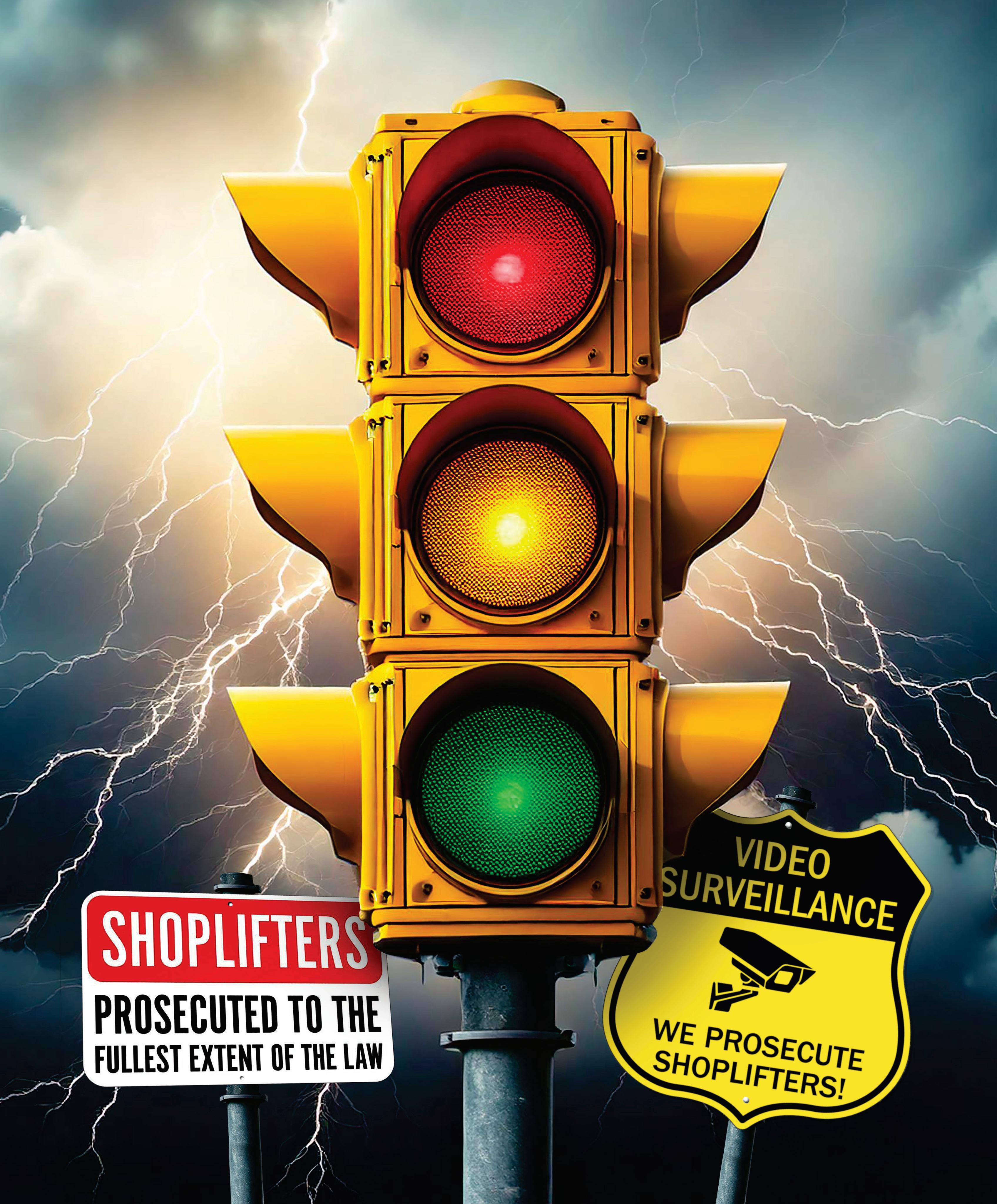
By Christina Burton, PhD
In the world of loss prevention, sometimes it is important to think like criminals. By understanding their thoughts and decision-making, interventions and strategies can be designed to disrupt and alter those thought patterns. This forms the basis for rational choice theory, which focuses on the rational calculation of benefits and costs associated with certain actions. However, what is and is not rational is often boiled down into two concepts: choice-structuring properties and bounded rationality.
Choice-structuring properties relate to the “internal checklist” that is required to do certain actions. In this way, everyone is capable of committing crime, but we all have different thresholds and conditions necessary before we do so. Think about stealing money from a table in your office. Some people may steal the money if there’s only $20 there and no one is watching. Others may require it to be after work to avoid suspicion. Regardless, anyone can be a criminal under certain conditions, and research can attempt to discover what those conditions are. Once those conditions are known, practitioners can then alter their presence to dissuade and discourage those behaviors.
Bounded rationality suggests that we can only make decisions based on the knowledge we have, not the total amount of information that exists. In other words, our decisions are “bounded” by the information we have at that point in time. No offender has all the information about security measures, but we can shape what someone knows to be part of that decision-making.
To better understand some of those characteristics, let’s explore two frameworks used to understand how offenders view their targets and what forms part of those “choice-structuring properties.”
Originally conceptualized as the characteristics of “hot products” by Clarke, the CRAVED framework describes the characteristics of targets that would be most enticing for offenders. CRAVED is an acronym that suggests certain choice-structuring properties that would encourage certain types of criminal acts (usually theft): concealable, removable, available, valuable, enjoyable, and disposable. However, Pires and Clarke expanded “Available” to instead incorporate “Abundance” and “Accessible,” hence the sometimes altering of the spelling to CRA(A)VED to include both of these components.
CRA(A)VED has largely been explored within wildlife crime, such as through parrot poaching, illegal fishing, illegal crab and
CRA(A)VED describes certain “attractive” characteristics in products for thieves:
● Concealable
Removable
Available
Valuable
Enjoyable
Disposable
lobster fishing, and livestock theft. Beyond wildlife crime, some research has investigated the application of CRA(A)VED to sexual homicides and, most importantly to this discussion, theft of various consumer goods.
Though not as heavily investigated by researchers within a wildlife crime context, some studies have explored theft in retail spaces and the impact of CRA(A)VED characteristics on certain products.
For shoplifting, Smith investigated the theft rate of four different categories of products within one retailer: over-the-counter drugs, personal care items, beauty and cosmetics, and general merchandise. Based on an analysis of shrinkage due to “likely theft” as designated by the retailer, Smith found that not only were there “hot products” (products that were targeted over others) within each of the categories, but that the top three theft categories were nail cosmetics, film and memory cards, and cell phone accessories. Additional analyses also showed that the two strongest predictors for theft were if the product was “concealable” and “disposable,” though products that were viewed to be “valuable,” “enjoyable,” and “available” were also important in predicting theft. However, the CRA(A)VED characteristics only explained roughly 30 percent of why the theft occurred, leading to some follow-up studies to try to investigate this further.
Smith and Clarke tried to include additional measures associated with “disposability” that they believed would help improve the predictive power of CRA(A)VED on shoplifting. Here, rather than use an indirect measure of using the profit margin as an indicator of demand, Smith and Clarke broke it down further into three other ways to measure “disposability”: looking at differences in brand name products, looking at products that needed regular replenishment (like razor
Everyone is capable of committing crime, but we all have different thresholds and conditions necessary before we do so.
blades), and products that had specific roles in illicit drug use.
However, they found that the earlier analyses, those that did not account for these additional measures, were less predictive of theft than the earlier analyses by Smith. This suggests two important findings. First, CRA(A)VED is not the silver bullet in completely predicting crime. It is a useful tool that can predict theft better than randomly guessing, but it is not perfect. Second, CRA(A)VED is only one calculation of many that offenders may do when choosing their targets. What is also likely, though not captured in CRA(A)VED, is their perception of current security tools, such as EAS and security wrap alarms, which is something offenders will actively consider in their choices.
There are a few concerns when only looking at the CRA(A)VED model to understand “rational” target selection. First, CRA(A)VED only focuses on the characteristics of the product rather than its context within the store. In other words, CRA(A)VED only applies to the product’s shape, size, and value rather than also considering where it’s located within the store and what security measures are utilized with it.
Second, one of the major limitations when using CRA(A)VED in trafficking scenarios (including the movement of products within a supply chain) is that different stages of the movement of products could be rated differently by different actors. For example, if we look at an ORC operation involving “boosters” (individuals who steal products from stores to be sold) and “fencers” (the sellers of that stolen property), they may have different preferences of viable targets. “Boosters” may want to focus on concealable and disposable targets to remove them from the stores and get rid of them quickly. “Fencers,” on the other hand, may wish to have products that are more valuable, enjoyable, and available so that they can sell them at a higher profit. As such, a different approach may be necessary to understand supply chain and organized retail crime-specific issues, such as the CAPTURED model initially developed for wildlife trafficking. As mentioned previously, offenders, under a rational choice theory perspective, will calculate the benefits and costs of certain actions. This is part of the “choice-structuring properties” described earlier, where certain conditions are necessary for a crime to be committed. However, CRA(A)VED is generally limited to focusing on the initial theft of the product rather than its movement through other criminal networks. What is valued by the initial thief may not be valued by the seller of those stolen goods. CAPTURED then expands on those ideas to understand the priorities of different criminal groups (thieves versus traffickers, for example).
Similar to the CRA(A)VED model, CAPTURED is an acronym that describes the characteristics of products that are enticing to offenders.
There are some additions and alterations from the original CRA(A)VED model. First, CAPTURED tries to shift

away from only focusing on the monetary worth of products from the term “valuable.” Rather, it broadly accepts that some items have priorities beyond financial elements. This is also incorporated with its inclusion of “usability” and “enjoyability” as characteristics. For instance, drugs may be valued not just for the price, but also for the effects they have on the person consuming them. Similarly, for perishable items, especially grocery items like meat and fruits, traffickers will need to consider the transportation needs of certain products over others, lending the addition of the “transferability” of that product.
Second, it highlights important elements in the movement of those products between user groups, traffickers, and storefronts (both legal and illegal, as might be the case for laundering products). For instance, looking at thefts of razor blades from stores, the “booster” (individual stealing the product from the store) may prioritize the concealability of the product while end users may instead emphasize the usability of those products. Similarly, benefit-denial mechanisms may impact those end users rather than the initial “boosters,” becoming a key concern for the reseller rather than the booster.
Third, CRA(A)VED does not necessarily account for situations in which products are reintroduced back into either illicit or legitimate markets. Because CR(A)VED generally focuses on the initial theft, other situations (such as double brokerage in the
supply chain or reselling through online marketplaces) related to the initial theft are ignored. Rather, CAPTURED views each stage of the full crime as interconnected, though discrete, events.
Unlike CRA(A)VED, which primarily focuses on the actor-focused qualities of the product (in essence, the emphasis on the offender), CAPTURED also accounts for stage-focused considerations of the product (the separation of the entire crime into discrete components). In other words, CRA(A)VED is limited to only focusing on the characteristics that offenders believe are advantageous for theft; CAPTURED, in contrast, also accounts for the characteristics that are favored by those that engage in trafficking, or those that sell to the end users. This is explored a bit more in the next section.
As alluded to in the previous section, CAPTURED is advantageous for discussing a broader, market-driven view of theft rather than solely focusing on just the characteristics of the target itself. In this way, CAPTURED attempts to showcase how narrowly focusing on just the theft of the product misses the criminal ecosystem and market dynamics in which that theft is situated, which has been an issue when discussing ORC.
To better understand this, it is important to know some of the dynamics associated
with organized crime, and it is important to get a working vocabulary in the discussion of some key terms. Within an organized crime structure, there are groupings of people that have specific roles, such as those that either produce a specific product (such as those within drug rings), those that remove products from existing markets (such as “boosters” in retail crime, cargo theft within a supply chain, or poachers in wildlife crime), and those that sell those products into either illegitimate or legitimate markets (such as the “fencers” in retail crime).
Similarly, there is an element of an enterprise when describing ORC, but, unlike in a typical business, ORC can vary in its “looseness,” similar to other trafficking rings. Here, different groups may only know a few members of other groups, but, as a whole, those intermixing groups orchestrate an economically driven stealing, defrauding, and selling process. The challenge, however, is that simply removing one member in any of the groups does not dismantle the entire business; rather, they can be easily replaced with other members, and lack of knowledge of all members in the “organization” can be advantageous since it limits visibility for law enforcement and retailers as to who all the key actors in that ORC ring are.
CAPTURED, however, can highlight how each of these different “actors” prefer different characteristics of the product. We can see some examples of what this can look like depending on the specific ORC case (adapted from Moreto & Lemieux, 2015).
Overall, CAPTURED presents a useful framework for understanding organized retail crime by expanding upon the earlier principles of CRAVED and looking beyond the initial theft of a product. However, a few key limitations exist within the CAPTURED framework that should be discussed here. First, tests for CAPTURED have been limited to content analyses of news articles and interviews. Unlike studies of CRA(A)VED, limited studies have assessed the predictive power of each CAPTURED component on the different crime types embedded within organized crime (such as the initial theft, trafficking, illegal resale of products, etc.) In other words, it is not exactly clear which components of CAPTURED are important for each segment of the organized crime event (the theft to the trafficking to the
Target Selection
Shoplifting
Brokerage to Trafficker
Brokerage to Reseller
Reselling Product
• Product type is identified at the store
• Key CAPTURED elements: Available, Desirable
• Razor blades stolen from the store by “booster”; may require removing security devices on the product (“processing” the product)
• Key CAPTURED elements: Concealable, Processable, Removable
• “Booster” sells the desired project to trafficker
• Key CAPTURED elements: Concealable, Transferable
• The trafficker delivers the product to a “fence” or reseller
• Key CAPTURED elements: Concealable, Transferable
• The fence uses an online storefront to sell the stolen goods
• Key CAPTURED elements: Available, Usable, Enjoyable, Desirable
Target Selection
“Fictitious Pickup”
Transport
Resell into Supply Chain
• Inside information of which truck has quality meat stored inside
• Key CAPTURED elements: Available, Removable, Desirable
• Bad actors defraud the trucker with the target
• Key CAPTURED elements: Available, Processable, Removable
• Bad actors transport the newly stolen meat in refrigerated trucks
• Key CAPTURED elements: Concealable, Transferable
• The bad actors that stole the goods from earlier truckers can resell the products back into the supply chain
• Key CAPTURED elements: Transferable, Usable, Desirable
Target Selection
Taking Cards
(Re)Placing Cards
Checking Balances
Acquiring Merchandise
• Thieves determine which physical store has physical gift cards in relatively unsecured locations
• Key CAPTURED elements: Available, Desirable
• Thieves take physical cards off the rack
• Key CAPTURED elements: Available, Concealable, Removable
• The unique card numbers are collected, and the physical cards are placed back on the same rack
• Key CAPTURED elements: Concealable, Transferable
• Through automated systems, the unique card numbers are checked to see if a balance has been added to the card
• Key CAPTURED elements: Processable, Usable
• Once the card number has been identified as having a balance, it is immediately spent on a subsequent purchase
• Key CAPTURED elements: Transferable, Usable, Enjoyable
reselling of the product) other than through this theoretical lens.
Second, studies of CAPTURED have primarily been limited to understanding wildlife trafficking (and partially to labor trafficking; see Moreto et al., 2020) rather than other forms of organized crime (such as drug trafficking and ORC). Though there are likely similarities between the two, there are some questions as to how certain components of CAPTURED translate into retail crime. For instance, poaching of certain reptiles could lead to either the removal of the live animal or the trafficking of certain by-products (meat, skin, etc.) In this sense, the latter’s value for the end user could require the target (the snake) to be processed.
However, in a retail setting, this is not as easily defined. Perhaps a processed product is one devoid of its security measures, but this leaves many products already on shelves to be considered “processed.” A processed product could instead be considered one without its original package, which could be one strategy offenders use when defeating EAS systems since the source tagging would be left on the shelf. Further discussions with practitioners and academics alike could better define what these terms mean and how to develop strategies that would assist in crime prevention.
EDITOR’S NOTE: Find more information on the sources used for this article at LPresearch.org.

Christina Burton, PhD, is a research scientist at the Loss Prevention Research Council. She received her PhD in criminal justice at the University of Central Florida in 2023 with her dissertation “Understanding the Interactions Between Conservation Agencies and Rangers: A Mixed-Methods Approach.” She primarily focuses on survey design, situational crime prevention, intelligence-led policing and crime analysis, and environmental criminology. She previously received a master’s degree in criminal justice, a graduate certificate in crime analysis from UCF, and bachelor’s degrees in anthropology and biology from the University of Florida. She has presented research at multiple conferences, including the American Society of Criminology, the Academy of Criminal Justice Sciences, the Southern Criminal Justice Association, and Ranger Rendezvous. She has published several peer-reviewed journal articles. ATHENA International has also recognized her with their Emerging Women Leadership Fellowship award for such scholarship. She also enjoys teaching and has been awarded the Outstanding Doctoral Student Educator Award within the Department of Criminal Justice at UCF.
Employee safety is paramount for businesses. At its core, employee safety involves measures and protocols designed to protect the well-being of individuals in potentially dangerous situations. For retailers, this means creating an environment where employees can perform their duties without fear of harm, especially during violent incidents. In retail stores, employees are often the first to encounter these threats. Without the right tools, they might feel compelled to intervene directly—putting their own lives at risk. But how can retailers ensure employee safety in a world where threats are increasingly complex and unpredictable?
Flock Safety provides a comprehensive suite of security solutions designed to bolster employee safety measures, offering retailers and their staff peace of mind. From license plate recognition (LPR) cameras to advanced video solutions and gunshot detection technology, Flock empowers retailers to protect their teams while preventing them from engaging in dangerous situations.
Flock Safety’s LPR cameras automatically capture and catalog license plate data from vehicles entering or exiting a property. In the event of a theft incident or other crime, security personnel can simply add the suspect’s vehicle to a custom Hot List. This triggers an alert when the vehicle returns, enabling security teams or law enforcement to respond quickly—without requiring employees to directly engage with suspects. Instead of running after a fleeing criminal or confronting them on the premises, employees remain safe while the technology works in the background to track known offenders.
Flock is at the forefront of utilizing AI-powered technology for 24/7 threat

detection. Flock’s video cameras are equipped with People Detection Alerts that can be configured to automatically detect individuals in restricted areas during unauthorized times, such as after hours. Additionally, Flock’s PTZ cameras feature Guardian Mode, which automatically detects and tracks people and vehicles, capturing detailed images around the clock—even overnight or when no physical camera operator is present.
Flock’s gunshot detection system can also make a significant impact on employee safety. This advanced audio technology instantly identifies the sound of gunfire, pinpoints its location, and alerts law enforcement within seconds. In active shooter situations, this rapid response capability can save lives by ensuring law enforcement arrives faster. More importantly, employees are not left
to assess the danger themselves or make split-second decisions in high-stress situations.
Using video cameras and gunshot detection in conjunction with LPR cameras provides the crucial evidence needed to identify perpetrators and resolve incidents. For employees, this means that their role in security incidents can shift from reactive to observational.
At Flock Safety, we believe employee safety is about more than just technology—it’s about creating a culture where employees feel supported and protected. By integrating LPR cameras, video, and gunshot detection into your workplace violence prevention plan, you’re not only investing in the safety of your business but also in the well-being of your team. Proven safety benefits include:
● Reduced physical risk: Employees remain out of harm’s way, relying on technology to handle potentially dangerous situations
● Faster law enforcement response: By providing automated, real-time alerts and actionable objective evidence to law enforcement, employees can rest-assured that swift action will be taken
● Increased employee satisfaction: Knowing that the business has invested in advanced security solutions makes employees feel safer and more valued
Let technology do the heavy lifting so your employees can focus on what they do best—without fear. Learn more by visiting flocksafety.com.
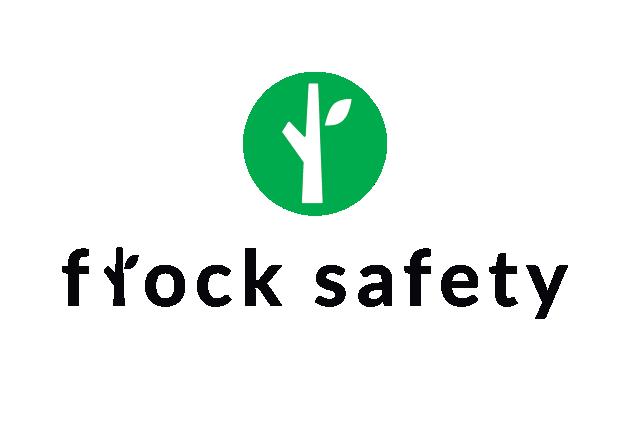
To stay up-to-date on the latest career moves as they happen, visit the Professional Development page on the LPM website LossPreventionMedia.com.
To inform us of a promotion or new hire, email us at PeopleOnTheMove@LossPreventionMedia.com.
David Anderson is now fraud, loss, and abuse analyst (UK); Jason Carcia Jr. was promoted to senior AP investigator at Abercrombie & Fitch.


Alexandria Reif, LPQ was promoted to senior manager, commercial AP at American Eagle Outfitters.
Dale Jackson is now LP market manager, Academy Sports.

Jason Griffin was promoted to corporate director of AP at Albertsons.
Amanda Buell, MBA, PMP is now global physical security PMO and strategy lead; Matthew Robinett, CCSP was promoted to senior program manager, worldwide operations security; Nathan Oldacres, BA, CPO, PCI was promoted to senior manager, risk at WWOS global investigations (UK); Bjorn Merse, CPP was promoted to director of field security and LP, continental Europe (Germany); Joseph Coleman was promoted to global senior physical security engineer; Krysta Frame, MS is now a security operations regional manager, non-traditional markets; David Rozhon, LPC was promoted to senior regional security program manager – Americas; Nick Schenk was promoted to senior program manager, security services management; Brent Cohen, CFI, LPC is now senior manager of ORC investigations; Justin Reynolds was promoted to senior physical security project manager; Tyler Haines was promoted to cluster LP manager; and Gregory Bowman was promoted to multi-site LP manager at Amazon.
Cynthia Lopez is now corporate AP manager; Collette Greer is now corporate manager of AP programs; Emma Gomez was promoted to manager of AP; and Noah Nathanson is now a district AP manager at Albertsons.

Tanisha GonzalezWellman is now VP of LP, safety, and security at AutoZone.
Charle Reis is now a regional LP coordinator at Americanas (Brazil).
Dave Thompson is now LP manager, UK and Ireland at Asda Express (UK).
Edjanisson Andrade is now a regional LP manager at Atacadao Dia a Dia (Brazil).
Bobby Haskins was promoted to senior vice president, customer, North America; Terry Sullivan, LPC was promoted to senior vice president of strategic partnerships, North America; Mikyla Houston is now retail solutions director; and Laura Dainauskiene is now retail solutions director, Canada at Auror.
Tora Harris, CFI was promoted to LP market director at Bealls.
Kelly Erickson, CFI, CFE is now investigations senior manager at Best Buy.
Andrew Rosenbrock is now national central investigations and security manager at Bunnings (Australia).

Adam Gilvin is now director of AP at Bass Pro Shops/ Cabela’s.
Anuj Batwal was promoted to senior LP executive at Canabil Retail (India).
Charlie Miller is now a regional LP manager at Capri Holdings Limited.

Adam Kupchella is now VP of field AP at Burlington Stores.
Dino Scaccia is now director of LP, Northeast; Kyle Schambach and Matt Carroll are now regional AP managers; and Shannen Stenerson, Simon Boyce, LPQ, Aaron Pacheco, Chrissy Martin, and Billy Fruge are now district AP managers at Burlington Stores.
Shady Elsabie is now senior manager of investigations at CEVA Logistics.
Matt Glazier, LPC is now senior AP manager at Chewy.


Joshua Salthouse, CFI is now a senior investigator at Comcast.

Julie Giblin is now senior director of AP at Crate & Barrel.
Ryan Torres is now security manager, northeast region at Curaleaf.
Tim Henderson is now a regional ORC manager; and Tim Reiley is now an ORC manager at CVS Health.
Ankit Wale is now team lead, LP, risk, and compliance at David Jones (Australia).
James Schroeder is now field investigations manager at David Yurman.
Rick Mitchell is now director of APsupply chain at Dollar General.
David Patterson Jr. is now a regional AP manager at Dollar Tree Stores.
Kyle Tooth is now an LP manager at Dollarama LP (Canada).
Gabriel Montes is now director of LP at El Palacio de Hierro (Mexico).
Jose Moreno is now regional manager of investigations at Essilor Luxottica.
Danilo Freitas is now senior compliance and operational monitoring analyst at Estapar (Brazil).
Randy Gentry is now a multi-unit LP manager at The Exchange.
Chris Ryan was promoted to vice president of sales; Bobby Mothershed was promoted to executive director of sales and business development strategy at FaceFirst.
Miguel Ignacio Manzo Garcia is now head of LP at Falabella Ovalle (Chile).
Anthony Hegg is now a regional AP manager; and Johnathon Gwillim, CFI is now a market investigator at Family Dollar.
Corey Smith was promoted to senior investigator at Gabe’s.
Bryan Peranzo is now senior manager of AP global security; Karyn Cruz, CFI is now a regional LP manager; and Gjon Lulgjuraj, Cielo Beltran-Rodriguez, and Kristen Clarke are now area AP managers at Gap.
Katia Salomon is now an area LP specialist at Gelson’s Markets.
Justin Dennis, CFI, LPC is now a regional AP manager at Global Partners LP.
Jerry Burch is now director of AP and safety at Goodwill Industries of the Valleys; Mark Andert is now a regional loss prevention manager at MERS/Goodwill Industries; and Dominic Diemert is now an area AP manager at Evergreen Goodwill of Northwest Washington.
Evelyn Zepeda is now market security manager, south US and Puerto Rico at H&M.
Tim Orabone, CFI, LPC is now an area LP manager at Heinen’s Grocery Stores.
Deb Lussier is now senior manager of AP supply chain; Sean Segasture is now senior analyst, AP merchandising; Eric Trehern was promoted to senior manager, AP investigations; Grant Danby and Jake Harris are now regional AP managers; and Kyle Kurtz, CFI, LPC, Scott Snider, CFI, LPC, Lindsay Patton, and William Lehman, CFI are now district AP managers at The Home Depot.
Sam Amini is now a district LP manager at HomeGoods.
Ieva Gatulyte was promoted to head of security (UK); and Sophie Malard is now director of security (France) at Inditex.
Kevin Nuss is now information technology director; and Jamie Grace was promoted to client services manager at InstaKey Security Systems.
Andrew Jordan, LPC was promoted to district AP manager at JCPenney.
Jasiel Martinez, LPQ was promoted to area LP manager at JD Finish Line.
Bastien Lesaulnier is now territory profit and AP manager (France); and Karen Fraser is now an area profit and AP manager (UK) at JD Sports Fashion.
Hakan Ozalp, CPP, CFE is now corporate security manager at Kenvue (Turkey).

Temia Balogun is now a territory VP of LP, Midwest at Kohl’s.
Keiall Matthias was promoted to senior manager of remote operations and investigations; John Scott was promoted to manager of ORC; Steven Jerde and Christopher Jones are now ORC specialists; Chloe Mclearn, LPC, Chris Engelke, Rolando Gallardo, LPC, Joseph Rinker, Chris Rivera, Robert Robinson, LPQ, Michael Wassinger, and Alberto Sandoval are now district LP managers; and Emily Hulick was promoted to LP market investigator at Kohl’s.
Julie Marzheuser is now executive protection and special events manager; and Felicia Evans is now a division AP specialist at Kroger.

Carolyn Korchik is now director of global security at Levi Straus & Company.
Jason Lee, CFI is now manager of LP at Little Caesar’s.

Melissa Haynes was promoted to national AP project lead at Loblaw.
Ghislain St.-Pierre is now a district AP manager at Loblaw (Canada).
Alex Van Diggelen is now APAC senior LP manager at Lovisa.
Steve DePestel, LPC was promoted to AP/operations integration business lead; Selena Byers, LPC was promoted to online fraud and retail crime manager; Shaun Griffin is now AP shrink task force business lead; Ashley Rossi, MBA is now an AP shrink task force analyst; and Ken Cox, Kayli Picciolo, Anthony McCall, Mason Seewald, LPC, and Jeffrey Hanson, LPC are now district AP managers at Lowe’s Companies.
Delana Bennett is now director of AP and safety at Lumber Liquidators
Anthony Clark is now senior manager of AP supply chain; Justin Demes and Fritzner Nelson are now divisional directors of AP; Christopher DiFonzo was promoted to senior divisional investigator; Dermot Fitzsimons, CFI was promoted to senior manager of AP public sector liaison; and Jae Ellis is now senior manager, AP training and compliance at Macy’s.
James Macias is now group accuracy and loss operations manager at Marks and Spencer (UK).
Coral Meza Hidalgo Monroy CPP, DSE is now a regional security manager at Mercado Libre (Mexico).
Danilo Rocha and Fabio Pasquatto Stein are now LP senior analysts at Mercado Livre (Brazil).

Norman Murray is now head of profit protection North America at Merlin Entertainments.
Adina Spencer, CFI is now an area LP manager at Michael’s Stores.
Eduardo Jimenez Granados is now a regional security director, Mexico & Central America at Michelin (Mexico).
Aislan Pansardis is now a regional LP supervisor at Grupo Muffato (Brazil).
Ashlea Lewis is now national crime manager at MYER (Australia).
Andy Hind is now head of online fraud at the National Business Crime Solution NBCS (UK).
Tina Ayo, LPC, CFI Legacy is now a multi-unit AP and safety manager at Navy Exchange Service Command (NEXCOM).
Sam Goulbourne is now security solutions manager, UK & Ireland at NEXT (UK).
Mark Rachmaciej, LPQ was promoted to senior manager of LP and supply chain security at Newell Brands.
Lloyd de Bruin was promoted to principal, supply chain security and LP at Nike.
Jon Tabler, PSP, LPQ, LPC, CECI was promoted to AP operations center team lead; Samuel “Bo” White, LPC was promoted to senior regional AP manager; Nicholas Stine, MED, CFI is now an area AP manager; and Matthew Schaefer and Ryan Watkins are now market investigators at Nordstrom.
Ony Easter is now a district AP manager at Ocean State Job Lot.
Jo Day, CFI, CPP is now a WZ EU instructor and business development consultant at Oris Group (UK).
Matthew Webb is now regional LP lead at OSL Retail Services.
Matthew Dowling, LPC is now a regional LP manager at Pep Boys.
Stephanie Ho and Adam ElHayek is now an ecommerce fraud prevention investigator at Petco Health and Wellness.
Flavio Cruz is now a market intelligence manager at Popular Pet (Brazil).

Robert Cormie was promoted to VP of AP and facilities at The RealReal.
Ariel Jose is now an area AP manager at The RealReal.
Mohit Singh Parihar was promoted to national lead security-LP network operations at Reliance Jio (India).
George Lembessis is now head of LP at Retailors & the Fox Group (Canada).

Hector Pearson, LPC was promoted to VP of AP at Rite Aid.
Raymond Desrochers was promoted to senior director of AP at Purolator (Canada).
Mandy Fitzpatrick is now an LP specialist at Poundstretcher (UK).
Chuck Taylor is now a district loss prevention specialist at Publix.
Jeff Maine is now an area LP director at RL Liquidators.

Sarkeis Tomeh was promoted to director of loss prevention at Ross Stores.
Robby Saylor was promoted to regional LP director; Tyler Gill, Troy Holub, Nadia Abumar, Suny Vang, Jennifer Walker Dotson, CFI Legacy, LPC, and Burkely Bitaraf are now senior area LP managers; and Moises Rosario, MA, AJ Landaeta, and Jarrell Wilson are now area LP managers at Ross Stores.
Jeff Mclain is now a district LP manager at Rural King.

Yajayra Gonzalez is now director of AP finance, physical security, and technology at Saks Fifth Avenue.
Abraham Gonzalez, MSOL, CFI, LPC is now director of fraud risk and digital investigations; Bryan Granata is now AVP of investigations; Erick Ruiz, CFI was promoted to senior manager of investigations; and Alex Riveroll is now AP director - NY Flagship at Saks 5th Avenue.

Sean Tireman was promoted to AVP of asset protection at Saks Fifth Avenue.
Robert Henle was promoted to regional AP manager at Saks Off 5th.
Tiffany Hallworth, CFI regional LP manager and Womack is now an LP field manager at Sally Beauty.
Juan Pena is now an area asset protection manager at Sam’s Club.
Marc Rojas is now global VP, global clients, data center security at Securitas.
Miguel Castaneda, LPQ promoted to district LP manager at Sierra.

Felix Hernandez, DSE is now corporate senior manager of security, health, and safety at Grupo Sesajal (Mexico).

Robert Ruiz, CFI was promoted to VP of LP at SEPHORA.
Amanda Hobert, CFI and David Vanoni, CFI are now regional LP directors; Steven Rios-Gonzalez was promoted to LP operations manager; Tyler Cross, Vernon Jenkins, Brittany Osman, Abdul Mosleh, Casey Kirsner, Preston Ho, Eddie Logan, Lucious Caston, Alex Badillo, Randy Saldana, Dave Thompson, Jimmy Hartmann, CORCI, CC/II, Caleb Kragelund, Kasey Kolnberger, Maria Plascencia-Avina, David Quinton, James Mucherino, Terrell Matthews, Deana Rodriquez, and Jaime Padro are now district LP managers; and Neil Premachandran and Jodi Palermo are now area LP managers at SEPHORA.
Luis Banuelos is now a district LP manager at Smart & Final.
Jessie Silliman was promoted to manager of asset protraction systems and programs and Jonathan Pierce is now a regional AP manager at Southeastern Grocers.
Jeannie Tatis is now senior director of corporate security at Southern Glazer’s Wine & Spirits.
Nick Smith is now head of risk at Spotlight Retail Group (Australia).
Jonathan Price is now a field LP manager at Staples.
Richard Rodriguez, LPC is now corporate site security manager at Stanley Black & Decker.
Stuart Deske is now a regional LP manager at Tapestry.
Carl Yarbrough is now a cyberthreat intelligence analyst; Ross Swanson is now AP business partner, global supply chain and logistics; and Juan Puente, Lucas Little, and Ryan Sebesta are now AP business partners at Target.
Amelia Kani was promoted to head of investigations - Americas at TikTok.
Ian Thomas was promoted to AVP –head of LP (Europe), Branden “Ben” Benn is now global security and safety specialist; Jamey Loonie was promoted to field investigations manager; Chris O’Neil was promoted to investigations manager, HOLP analyst team; Francois Trudel was promoted to COCD/ ORC investigator (Canada); Carissa Brinkman, CFI is now LP supervisor, e-commerce division; Cherise Barr, CFI, Dave Yarland (UK), Richard Day (Europe), and Nic Marmon are now district LP managers; Katie McCabe, LPQ and Jeffrey Burton, LPQ are now district LP supervisors; and Brenda Velazquez is now a supply chain investigator at The TJX Companies.
Vishal Muraskar is now an area manager of security and LP at Trent Hypermarket Star Bazaar (India).
Karie Carroll was promoted to regional loss prevention manager and Patrick Strahan is now an area LP manager at ULTA Beauty.
Asheesh Agnihotri is now senior manager of security and LP at V-Bazaar Retail (India).
Adam Eaton is now director of corporate security and investigations, and Maya Jackson is now director of business continuity and crisis management at VF Corporation.
Beth Lucky and Holly Russell are now regional AP managers at Victoria’s Secret.

Scott Sanford is now VP of AP at Victra-Verizon.
James Partin was promoted to director of LP at Von Maur.
April Delvisco was promoted to senior manager of AP cash operations research and recovery team; Brandon Wilkinson is now senior manager, East BU – AP shrink specialist; Joseph Lyons was promoted to senior manager of AP platform solutions; Ashley Landry was promoted to regional ethics and compliance director; Justin Combs was promoted to regional AP director; Jedy Segarra is now a market AP manager; and Desyry Sanchez was promoted to regional security officer at Walmart.
Cheyne Collins CCII, CORCI, CEFI is now director of supply chain and technology at West Egg Security.
Josh Crippen was promoted to regional AP director at Whole Foods Market.
Michael Ibarra, CFI is now a regional AP manager at Worldwide Golf.
Kartikey Bhavsar TAPA - FSR is now a cluster security and LP manager at Zepto (India).










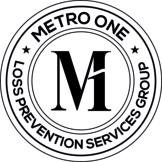












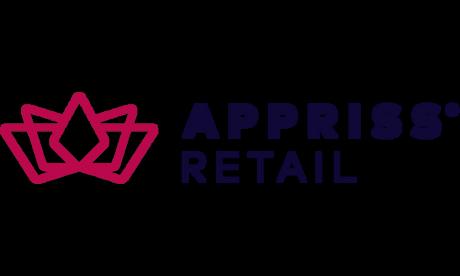



























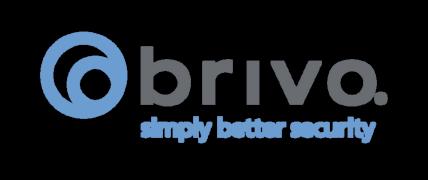























The Loss Prevention Foundation (LPF) is a leader in educating and certifying retail loss prevention and asset protection professionals by providing relevant, convenient, and challenging educational resources. The LPF is dedicated to elevating the industry through its accredited LPQualified and LPCertified courses. For more information, visit losspreventionfoundation.org.





I’m excited to announce that I’ve officially earned the LPC! Completing both the LPQ and LPC programs has been a rewarding journey and a major career milestone. After finishing the LPQ, I felt overwhelmed at the thought of tackling the LPC, knowing how much more study time it would require. However, with the momentum from passing the LPQ, I figured—why stop there? Now, I have no regrets. The knowledge I’ve gained is invaluable, and I’m proud to check this off my bucket list. The LPF scholarship was crucial in alleviating financial hindrances, allowing me to pursue both certifications without any hassle. The LPC program challenged me but also sharpened my insights into loss prevention. For anyone considering this path: take that first step. The journey is worth it, and the rewards far outweigh the challenges. Embrace the learning process; it will open doors you never imagined. I’m deeply grateful to the LPF team for their support and hope to inspire others on this journey.


The LPC course and exam have been incredibly beneficial. As an employee who has worked in both operations and loss prevention in retail, I was surprised at just how much I was able to learn in both areas. Receiving my LPC certification will help me in so many areas in my current role as well as in growing and advancing my career. I look forward to using the content I learned in the LPC courses, and I highly recommend it to others.


Taking the LPQ course was an amazing opportunity provided by Auror to expand my knowledge of the loss prevention field and continue to develop my skill set. I learned a lot from each chapter and was able to regularly check my knowledge with the end-of-chapter quizzes. My favorite part of the course was the study sessions, where the content was reviewed in a group setting. It was a fun way to review, test course comprehension, and meet new people. I look forward to applying the knowledge in my day-to-day life as a loss prevention professional and am very grateful for the opportunity.
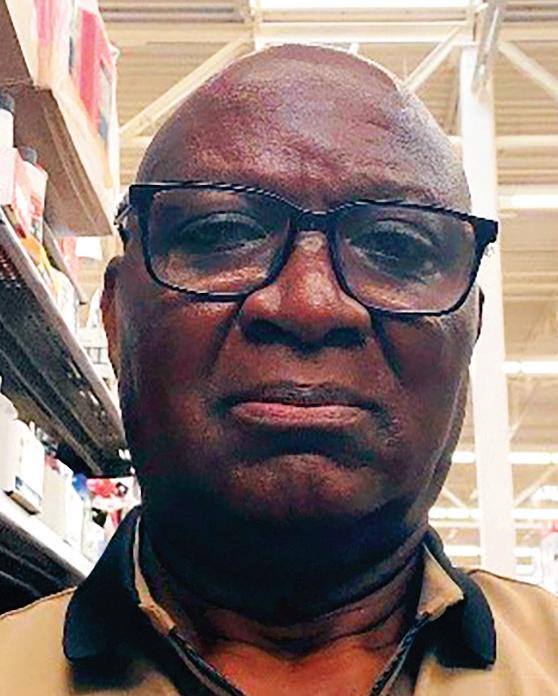

I’m about two years into the loss prevention industry, and with determination, I am proud to announce that I have completed and passed the LPQualified exams. I really want to thank the Loss Prevention Foundation for the opportunity and support for the certification. The program opened my eyes to a great wealth of knowledge, tools, and concepts in the retail industry. The LPF programs are worth considering, and I recommend them to anyone in the retail business/industry who wants to move their professional career to the next level.
The following are individuals who recently earned their certifications.
Recent LPC Recipients
Nikkolas Pigg, LPC
Teresa Selleck, LPC, LPQ, 7-Eleven
Elizabeth Boeggeman, LPC, American Eagle Outfitters
Ashley Merrill, LPC, The Giant Company
Corae Baker, LPC, LPQ, The Home Depot
Alexandria Reif, LPC, LPQ, American Eagle Outfitters
Ernest Chaney, LPC, Goodwill of Central and Northern Arizona
Tim Clemens, LPC, Kroger
Jennifer Gehringer, LPC, American Eagle Outfitters
Randall Long, LPC, American Eagle Outfitters
Ajith Mathew, LPC, LPQ, Rogers Communications
Tiffany Schuler, LPC, Lowe’s
Heith Acosta, LPC, Lowe’s
Hannah Hibbard, LPC, LPQ, United Supermarkets
Travis Johnson, LPC, Tucson Police Department
David LaGrone, LPC, CVS Health
Recent LPQ Recipients
Kellie Bryant, LPQ,
Canyon Hitt, LPQ, ALTO
Monica Rodriguez, LPQ, TJX
Sean Goldmann, LPQ, TJX
Samantha Warren, LPQ, TJX
Elaine Nelson, LPQ, TJX
Allison Newton, LPQ, TJX
Justin Hoff, LPQ, TJX
Victoria Von Marquart, LPQ, ALTO
Andrew Godsey, LPQ, Amazon
Lesley Manzo, LPQ, DHL
Devin Flynn, LPQ, ALTO
Alexander Canadi, LPQ, ALTO
Ryan Rupnick, LPQ, TJX
Krishneel Singh, LPQ, ALTO
Jamie Dotson, LPQ, Lowe’s
David Whittle, LPQ, The Home Depot
Kyle Evans, LPQ, The Home Depot
Aundrea Smith, LPQ, Fikes
Grit Pasternok, LPQ, Western Illinois University
Tyler Tarvin, LPQ, Western Illinois University
Rebecca Hofsteadter, LPQ, Western Illinois University
Nicholas Frey, LPQ, Western Illinois University
Amelia Vlaming, LPQ, Rexall
Joseph Redell, LPQ, Western Illinois University
Esther Alcaraz, LPQ, ALTO
Kevin Bergreen, LPQ, Gatekeeper Systems
Ondre Forrest, LPQ, TJX
Caroline Ailstock, LPQ, University of South Carolina
Abigail Boatwright, LPQ, University of South Carolina
Alidia Smith, LPQ, Western Illinois University
McKenna Vischer, LPQ, University of South Carolina
Bonnie Sherwood, LPQ, University of South Carolina
Ella Brooks, LPQ, University of South Carolina
Sam Maiden, LPQ, University of South Carolina
Sterling Clark, LPQ, University of South Carolina
Nicolas Viglione, LPQ, Staples
Justin Adrian, LPQ, The Home Depot
Paige Finch, LPQ, DICK’S Sporting Goods


Matas is globally recognized in asset protection, digital fraud, thought leadership, and as a trusted advisor. As the president and principal consultant at Blacklight, John not only excels at uncovering hidden vulnerabilities and creating innovative risk mitigation strategies but also fosters strong and collaborative business relationships. His ability to bridge the gap between technical solutions and C-suite strategies has made him a valued partner for organizations seeking to enhance their internal frameworks while driving business growth. With a focus on aligning protection initiatives with overarching business objectives, John empowers companies to build trust, strengthen partnerships, and achieve long-term success in an ever-evolving threat landscape.

Retail loss prevention and fraud teams have spent far too long stuck in a reactive cycle—constantly responding to the latest fraud scheme or theft tactic. Whether organized retail crime, digital fraud, or identity theft, the industry is locked in a relentless game of cat and mouse. This phenomenon is what I call the Retail Defense Paradigm: a seemingly never-ending and frustrating loop where internal protection teams are always one step behind the evolving threats of fraud, theft, and organized retail crime.
For many retail industry professionals, this is not easy to admit—but it’s the reality we all face.
How do we break this cycle?
The answer lies in evolving our strategies from omnichannel commerce to unified commerce with unified data within each retailer and loss orchestration, all powered by unified, cohesive, and well-informed LP teams. This unified and integrated approach shifts the industry from reactive tactics to proactive defenses that cover every digital, physical, and operational retail touchpoint.
This global view allows retailers to better understand their customers’ behavior, personalize marketing, optimize physical inventory, and create more targeted promotions that directly drive sales and, in turn, increase customer loyalty.
Once unified data drives sales and operational efficiency, the next step is applying that data to the loss prevention operation. The insights that fuel sales growth can also identify hidden risks and fraudulent activity. In other words, retailers collect data on their best customers—and their worst. Retailers can quickly detect patterns like online purchases linked to in-store return scams and intervene before losses occur. Unified commerce doesn’t just support growth—it lays the foundation for proactive fraud detection and more effective loss prevention strategies. It assists in connecting the dots with investigative teams.
By moving beyond omnichannel to unified commerce powered by unified data, retailers can drive growth while simultaneously protecting their businesses from never-ending and evolving loss threats.
By moving beyond omnichannel to unified commerce powered by unified data, retailers can drive growth while simultaneously protecting their businesses from never-ending and evolving loss threats.
For years, omnichannel commerce aimed to create seamless shopping experiences across stores, websites, and apps by connecting various sales channels. The goal was to offer convenience and flexibility. Still, these systems often operated in data silos, limiting how effectively data could be shared and utilized by the retailer. The real game-changer—and the critical difference between traditional omnichannel and unified commerce—is using unified data.
Unified commerce doesn’t just link channels; it fully integrates all customer, sales, and operational data into a cohesive system. This gives retailers a complete 360-degree view of the customer journey—from online browsing to in-store purchases and returns.
Unified commerce sets the stage, but unified data truly drives the retail transformation. A retailer’s proprietary data is one of the most powerful tools they have to drive business growth, but it only works when it’s fully connected, accessible, and intelligently analyzed.
Today, critical data is scattered across disconnected systems: point-of-sale transactions, CRM records, inventory management, supply chain logistics, security, and LP systems. This fragmentation creates prominent blind spots, making it difficult for LP teams to capitalize on sales-driving opportunities and the ability to detect emerging risks.
Unified data solves this by ingesting and integrating all internal and external data sources into a comprehensive system. This includes transactional data, loss prevention records, fraud detection alerts, inventory data, and external organized retail crime (ORC) intelligence. This holistic data provides retailers with a complete and real-time view of their operations, eventually making it possible to identify and connect threats across all channels.
Machine learning models can process massive amounts of data from these diverse data sources and uncover patterns of loss that would otherwise go unnoticed. For example, machine learning models can identify correlations between high return rates, irregular purchasing behaviors, possible internal dishonesty, and external ORC activity—connecting the dots across seemingly unrelated data points.
Advanced pattern recognition significantly accelerates the investigative process. Instead of manually sifting through isolated data, LP and fraud teams can be empowered with real-time insights and automated alerting that points directly to suspicious behavior. Machine learning can predict potential fraud schemes, flag coordinated theft activities, and suggest proactive measures before incidents escalate.
By ingesting transactional data, fraud intelligence, and external threat data into a unified system, retailers gain a powerful tool that detects threats earlier and helps uncover previously unseen connections to support investigations. This shift from reactive analysis to proactive, data-driven strategies enables teams to keep one step ahead of sophisticated criminal tactics and safeguard revenue and operations.
The next evolution in retail protection is loss orchestration. This comprehensive approach integrates all forms of loss, from theft and fraud to operational inefficiencies, into a single, unified strategy that supports the Total Retail Loss methodology. Historically, loss prevention efforts have been fragmented. Physical theft, digital fraud, and supply chain risks were handled separately, creating critical gaps that bad actors could exploit.
Loss orchestration changes this by centralizing all loss-related data, enabling teams to analyze threats holistically and act with precision. It’s not just about addressing isolated incidents but tackling total retail loss as one interconnected problem.
Powered by unified data, loss orchestration allows retailers to:
● Automate pattern recognition workflows that trigger immediate and targeted actions.
● Integrate data from customer profiles, fraud detection tools, exception reporting, threat intelligence, and physical security systems into one centralized platform.
● Identify and mitigate loss patterns in real-time across all channels.
● Using machine learning and advanced analytics, retailers could use predictive modeling to anticipate future threats.
● Monitor cross-channel losses to close gaps between digital and physical operations.
● Reveal the hidden connections in complex ORC investigations.
This level of coordination moves teams beyond reactive loss and fraud prevention tactics to proactive strategies—empowering retailers to connect the dots faster and prevent losses before they happen.
Even the most advanced tools and strategies will fail if internal retail teams aren’t aligned. Historically, internal LP teams have been divided into separate entities—LP, digital fraud, supply chain protection, and operational teams—often working independently with inconsistent collaboration. This fragmented approach weakens the retailer’s ability to combat cross-channel threats effectively.
By unifying LP teams and integrating traditional LP and digital fraud teams under one leadership structure, we can eliminate communication barriers and foster seamless collaboration. When these teams work together, insights and strategies are shared in real time, creating a more vigorous, responsive defense.
A critical step is having digital fraud teams report directly within the LP hierarchy. This alignment ensures that physical and digital threats are tackled with a cohesive strategy. Retailers integrating fraud detection with loss prevention and investigative teams can respond faster, close security gaps, and mount a more coordinated defense against evolving risks.
Unified LP teams are the final and most crucial piece of the loss orchestration strategy. Once teams operate under a single framework, they can fully leverage unified data and commerce platforms—no more silos—just a streamlined, agile operation capable of identifying and neutralizing threats in real-time.
Unified commerce and unified data are powerful yet challenging investments for retailers. While implementing them can be costly and complex, the rewards are undeniable: seamless customer experiences, a unified view of the customer, real-time inventory insights, better decision-making, stronger brand loyalty, and innovative loss orchestration.
Retailers stand at a pivotal moment. Loss orchestration offers a proactive path forward, but it requires bold leadership and a shift in mindset. Reacting to the latest fraud schemes or theft tactics is no longer enough. To stay ahead, retailers must integrate commerce, data, and teams into a unified strategy built for the future.
This transformation won’t be easy. Success depends on collaboration between retailers and solution providers to create systems that detect and mitigate loss in real-time. Technology such as artificial intelligence, machine learning, and automation is already here, but it’s up to industry leaders to harness their potential. The opportunity to redefine retail loss prevention is now, and those who leap will shape the industry’s future.
Retailers stand at a pivotal moment. Loss orchestration offers a proactive path forward, but it requires bold leadership and a shift in mindset. Reacting to the latest fraud schemes or theft tactics is no longer enough. To stay ahead, retailers must integrate commerce, data, and teams into a unified strategy built for the future.

Courtney Wolfe
Wolfe is LPM’s managing editor focusing on creating and curating editorial content for the magazine’s print publication and website. Prior to LPM, she was managing editor for SDM Magazine, a trade publication for security systems integrators. She received her bachelor’s degree in multimedia journalism from Columbia College Chicago. She can be reached at CourtneyW@LossPreventionMedia.com.

The LP Magazine website and digital channels offer loss prevention and retail professionals a myriad of thought leadership articles from a wide range of industry experts, original articles from LPM writers, webinars, podcasts, whitepapers, and much more. There is new content updated to the website daily that is featured in our e-newsletter. To ensure that you don’t miss this important information, subscribe to our digital channel at losspreventionmedia.com/email/ or scan the QR code on the left.

To ensure that you don’t miss any important loss prevention information, subscribe to our digital channel by scanning the QR code above.


It is important for retailers, solution providers, policymakers, and the public to understand which products are most likely to be targeted by ORC groups. Learn which products the LPRC’s ORC Across the States Survey identified as the most popular to steal in this LPM exclusive!

Catch up on all the action from Chicago PD ORC Task Force Sgt. Ryan Delaney; New England State Police Information Network Criminal Intelligence Research Specialist Adam Berg; FBI Criminal Investigative Division Major Theft Program Manager SSA Douglas McKelway; FBI Management and Program Analyst Jamie Fallowfield; and Zebra Technologies Senior Analytics Solution Consultant Scott Pethuyne.


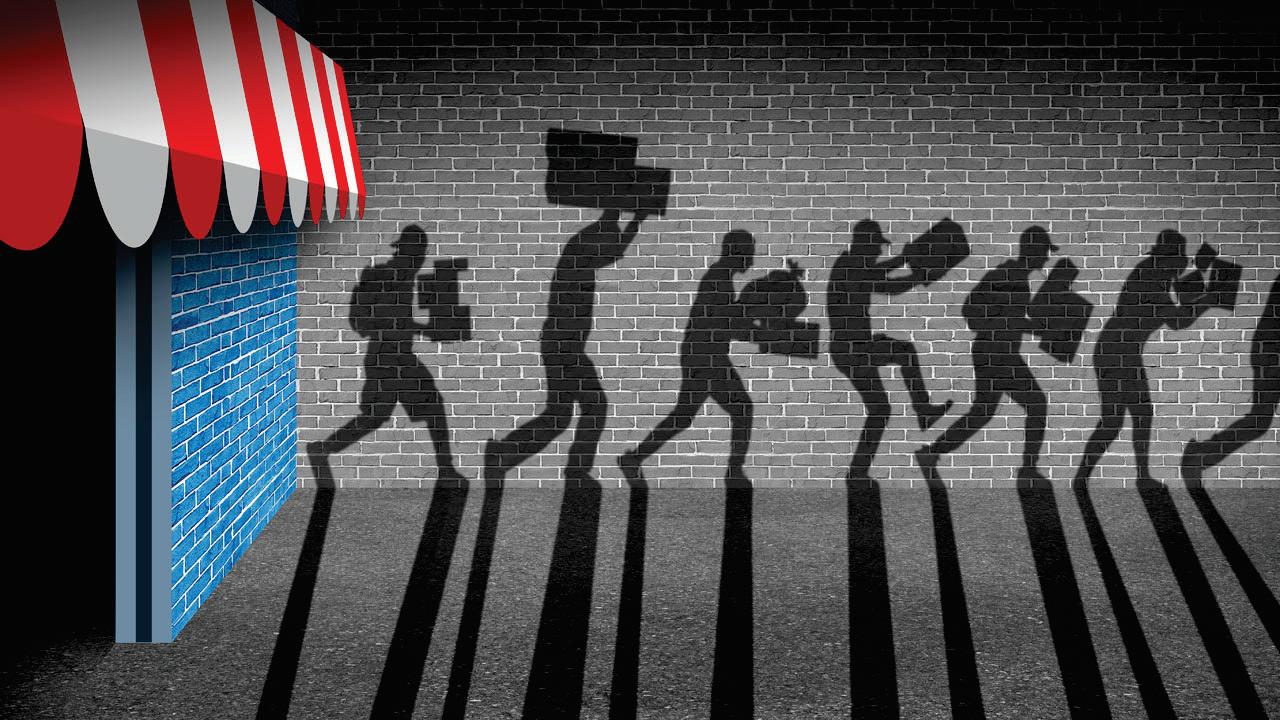



Out with the old and in with the new! As the world continuously changes, Wicklander-Zulawski strives to provide the most modern, evidence-based, and proven interviewing methods. In this video from WZ’s Instructor Insights series, learn more about how changes in concepts will impact your interviews.

Retailers reported a 93 percent increase in the average number of shoplifting incidents per year in 2023 versus 2019 and a 90 percent increase in dollars lost due to shoplifting over the same time period, according to a new study released by the National Retail Federation (NRF).

Macy’s announced that, during the preparation of its financial statements for the fiscal quarter that ended on November 2, it identified an issue related to delivery expenses. The company consequently identified that a single employee with responsibility for small package delivery expense accounting intentionally hid approximately $132 to $154 million in delivery expenses since Q4 2021.

What do you get when you put Loss Prevention Foundation Board members, Retail Industry Leaders Association Asset Protection Leaders Council members, loss prevention leaders, and solution providers in one room? One-of-a-kind networking, brainstorming, and enough inspiration to last for the next year, to name just a few things.

Peter Morello, president of CIS Security Solutions, has been awarded the title of Entrepreneur of the Year by the Business Development Board of Martin County, Florida. Since founding CIS—originally known as Computer Imaging Services—in 1989, Peter has been a trailblazer in the security industry.


New content is updated on the LPM website daily and is featured in our e-newsletter.

Jacque Brittain, LPC Editorial Director

Brittain is the editorial director for LP Magazine. Prior to joining the magazine, he was director of learning design and certification for Learn It Solutions, where he helped coordinate and write the online coursework for the Loss Prevention Foundation’s LPC and LPQ certifications. Earlier in his career, Brittain was vice president of operations for one of the largest executive recruiting firms in the LP industry. He can be reached at JacB@LossPreventionMedia.com.
We all understand that employees are at the center of any organization’s success. How those employees feel about the company they work for—their leaders, their teams, and themselves—ultimately provides the fuel for job satisfaction and exceptional performance. However, it’s equally important that our employees know and understand that their leaders recognize just how important they are to the success of the program and the dynamics of the team.
Everyone has a lot on their plate, and it’s easy to get caught up in the day-to-day of what we do. But leaders who are too focused on busy work schedules, juggling multiple responsibilities, and managing complex tasks could overlook one of the most easily executed opportunities to keep their teams content and engaged.
What does it really take to offer a little well-placed praise now and then? We often hear of the importance of ensuring that nothing shared during a performance review should come as a surprise, but we must also remember that should never be considered exclusive to negative feedback. It is more of a reminder than a message; our team members are the heart and soul of our operation, and they should know how we feel. Praise—like anything else—can be overused and underappreciated when taken to the extreme, but a sincere expression of gratitude can go a long way toward building morale and inspiring performance.
research also shows that it’s not uncommon for employees to feel their best efforts are routinely overlooked or ignored. Recent studies indicate that a lack of recognition is one of the leading causes of employee turnover, with almost half of US workers claiming they have left a job at some point in their career because they felt unappreciated. Additionally, 65 percent of respondents said they would work harder if they felt management better recognized their contributions.
Employee recognition doesn’t need to be time-consuming or over-the-top to be effective. The key is understanding what makes it meaningful and memorable for the employee. Here are a few best practices:
● Clarify: Recognize the particular actions or achievements to emphasize that you are paying attention.
● Make It Authentic: Feedback that is honest and sincere will always hold the most meaning.
● Make It Timely: Recognize contributions as soon as possible after they occur.
● Make It Personal: Tailor recognition when possible. Some employees prefer public recognition, while others may feel more appreciated with a private thank you.
● Encourage Peer Recognition: Peer recognition can be just as powerful and can foster a collaborative environment.
Recognizing employees for their contributions is an essential element of a healthy work environment.
Research consistently shows that employee recognition that is authentic, equitable, and personalized to the individual is critical for cultivating a fulfilling and productive working environment. Taking simple steps to acknowledge employees for their hard work can increase motivation, boost performance, enhance retention, promote teamwork, reinforce company values, improve employee wellbeing, and foster a positive culture. When employees feel appreciated, it validates their efforts and reinforces the idea that their hard work has real purpose. Even a simple “thank you” can boost morale, providing a sense of accomplishment and making employees feel valued and appreciated.
In the same respect, when leaders fail to acknowledge the efforts and hard work of their team, the results can be much different. The absence of recognition can actually be detrimental to productivity, leading to burnout, reduced morale, and, ultimately, a decline in performance. In fact,
● Make It Inclusive: Everyone should feel like their contributions matter. Ensure that recognition is extended to all employees, regardless of their role.
Recognizing employees for their contributions is an essential element of a healthy work environment. In today’s highly competitive and dynamic retail setting, companies continually seek ways to boost employee performance, engagement, and retention. While salary and benefits are crucial, those alone do not guarantee long-term satisfaction or success—there needs to be something more.
As we start a new year, reflecting on what brought us to where we are today is always wise. Leaders who focus solely on the bottom line, metrics, or results and overlook the importance of the human aspect of leadership and fostering a positive work environment may not remain leaders for long. Employees are more likely to take initiative when they feel their contributions are noticed and respected, and just because performance is expected, that doesn’t mean it shouldn’t be valued and appreciated.
























































































Don’t miss any of our award-winning magazines. Subscriptions are free to retail professionals, law enforcement, and solution providers serving the loss prevention industry in the US and Canada. Have each issue of the magazine sent to your home or office by simply going to LPMsubscription.com or scan the QR code.

Want to have magazines sent to your entire organization?

Provide a list or handout magazines to your office or store associates. Bulk quantities of the magazine can be requested by emailing circulation@LossPreventionMedia.com. We will contact you to work out the best method to fit your organization.
Our digital channel offers original articles written by LP Magazine staff, thought-leadership contributions from industry experts, breaking news, podcasts, and much more. Stay in-the-know by adding your email address to our digital channel database. Go to LossPreventionMedia.com/email or scan the QR code.

For help with any subscription issue, including address changes, email changes, or cancellations, contact circulation@LossPreventionMedia.com.








Built to the highest standards, our systems deliver reliable performance in any retail environment. Backed by rigorous testing and a comprehensive warranty, it’s a solution you can trust works as hard as you do—everyday. Scan the QR code to discover the solution that is right for you.